Happy NewYear!




1. What is it really? Amaryllis is the 2023 Bulb of the Year. The big, voluptuous blooms in red, white, pink or candy-stripes have returned to the glory of their Victorian conservatory days. But guess what? Amaryllis is really not amaryllis. It is classified as Hippeastrum. Technically, Amaryllis is the Latin name for a plant called the belladonna lily, which somewhat resembles our blowsy bulb, which we will continue to call amaryllis for this article.
2. From Mexico via Holland. Amaryllis is native to Mexico, but it didn’t come to Canada as a cultivated ornamental directly from there. It went to Holland first. It seems a roundabout route, but the Dutch were and are the world masters at hybridizing bulbs, and they worked their magic on amaryllis before it found its way to Canada in the 18th century.
3. The plant that never sleeps. Many bulbs, like tulips and paper whites, need a cold dormant period before they can bloom, but amaryllis doesn’t.


Once upon a time, two artists combined forces and fairy tales to create a modern classic. Stephen Sondheim and James Lapine, fresh off of their first collaboration, Sunday in the Park with George, set out on a quest to write their own fantasy quest story, a la The Wizard of Oz which served as a point of inspiration for the pair. This set the stage for the creation of their seminal work together, Into the Woods.
James Lapine, who was in charge of penning the script, began his career as a playwright
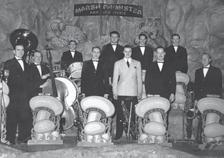

Happy New Year!
The New Year is a time to reflect on the past year as we embark on a new chapter in life.


Please celebrate the small victories and moments in 2022. We made it through another year, even through all those days you thought you never would, and because of it, you are stronger and wiser.
I want to thank all Kirkfield Park residents for the honour of representing this great community. In 2023 I am committed to working for you, being a strong voice for all Kirkfield Park residents, and working with you to improve our community. I will communicate openly, make decisions based on facts, put the needs of residents before my political objectives, and fight to strengthen our community and province.
In 2022 we witnessed more division and negativity in our communities. More and more, we hear politicians spending most of their time attacking each other rather than the issues impacting our communities. It is time to work together and put you, the residents, first.
I will not waste your time and money by playing political mud-slinging games. You deserve action and results from your elected officials, not schoolyard behavior.
I have spent my entire life dealing with bul-

https://www.rgf.com/test-results/




The all new HALO-LED™ is the industry’s first LED in-duct, whole home air purification system that is both mercury free and zero ozone compliant. The HALO-LED™ proactively treats every cubic inch of air conditioned space, thereby reducing airborne and surface contaminants and pollutants. By combining REME-LED™ UV technology along with RGF’s proven PH-CELL® and REME® technologies, the HALO-LED™ provides revolutionary indoor air purification.

The PiP-MAX™ portable air purification system utilizes RGF’s patented REME-HALO® technology reducing air pollutants such as bacteria, microbials, viruses, mold, smoke and VOCs. Leveraging ionization the PiP-MAX™ provides the added benefit of reducing airborne allergens, dust and particulates. Plugging directly into the existing wall outlet, the PiP-MAX™ can be installed in any room and offers an additional power outlet on the unit housing. Quickly and reliably resolve all your air quality issues with the portable PiP-MAX™ active air purification system.

Follow us online at: whatsupwinnipeg.ca
Facebook: Lifestyles55
Twitter: @Lifestyles55
PUBLISHER
Pegasus Publications Inc.
EDITOR Dorothy Dobbie dorothy@pegasuspublications.net

ART DIRECTOR Karl Thomsen karl@pegasuspublications.net
GENERAL MANAGER Ian Leatt ian.leatt@pegasuspublications.net
CONTRIBUTORS
Dorothy Dobbie, Rick Duerksen, Hon. Myrna Driedger, John Einarson, Michael Gibbens, Stefano Grande, Hon. Scott Johnson, Jim Ingebrigtsen, Kevin Klein, Ian Leatt, Myron Love, Jo Magnifico, Fred Morris, Manitoba Seniors Coalition, Manitoba Association of Senior Centres, Connie Newman, Brent Poole, Sanja Rossi, Senaka Samarasinghe, Robert Urano, Wayne Weedon, Nathan Zassman.
Canadian Publications mail product Sales agreement #40027604
ADVERTISING 1-888-680-2008 info@pegasuspublications.net
If you would like to receive Lifestyles 55, we offer both monthly newspaper and online formats.





To place your order, call 204-940-2700. Subscriptions are $48.00 per year, plus tax. American Express, MasterCard, Visa and cheque accepted. To view a back issue online visit lifestyles55.net
Published monthly by: Pegasus Publications Inc. 138 Swan Lake Bay, Winnipeg, MB R3T 4T8 204-940-2700 whatsupwinnipeg.ca
DISTRIBUTION
Available at over 100 locations from Winnipeg, Brandon, Steinbach, Morden, Selkirk, Flin Flon and The Pas. If you would like bulk copies of this publication, contact Ian Leatt at (204) 940-2707 or ian.leatt@pegasuspublications. net. Also available digitally at whatsupwinnpeg/ lifestyles and on Facebook: Lifestyles55
EDITORIAL SUBMISSIONS
Call Dorothy Dobbie at (204) 940-2716 or email dorothy@pegasuspublications.net for more information and guidelines. Any opinions expressed in columns by our contributors are their own opinions entirely and are not necessarily shared by Pegasus Publications Inc. All information presented by the contributors is the responsibility of the writers.
Lifestyles 55 is published monthly. Reproduction in part or in whole is prohibited without seeking permission in writing from the publisher.
Copyright Pegasus Publications Inc.
When Justin Trudeau took office in 2015, he proclaimed himself as being “woke”. We assumed he was simply announcing that he was a man of his times, progressive, and open to new ideas. Good, we all thought. We need a change. Even as a diedin-the-wool Tory, I was never that comfortable with the heavy-handed, frowning personality of Stephen Harper, although I admired his management and fiscal policies. So, taking a step back from that seemed part of a natural and desirable rebalancing.
Nothing alerted us to the real fact, that being woke has far deeper meaning. So, what is it? How is it affecting our world and our country? How far into this way of thinking is our Prime Minister and his government? And where could it take us in the future?
The Oxford dictionary added a further explanation of what “woke” meant in 2017: “originally: well-informed, up to date. Now chiefly: alert to racial or social discrimination and injustice”.
The term originated in the black communities of New York in the 1960s. According to the U.K. publication, I News, the African American novelist William Melvin Kelley created its earliest known new definition in an article titled, “If you’re woke, you dig it”. The article continues, “Ten years later in 1972, a character in the Barry Beckham play Garvey Lives! says . . .“I been sleeping all my life. And now that Mr. Garvey done woke me up, I’m gon’ stay woke!”.” The term picked up picked up steam during the Black Lives Matter movement.
Today, the word has again taken on broader meaning to describe everything from gender identification to environmentalism to the Me, Too crowd and much more.
Perhaps more important than what it covers is its general characterization: Surprisingly, wokeism focuses on individualism, but not in the way staunch conservatives see individualism where being strong as an individual means you are better placed to support the community. This individualism is all about Me, My comfort, My rights, My health, My safety, My pleasure, My self-empowerment.
Under the woke mandate, there is no stigma attached to anything an individual can or will do or contemplate. You certainly cannot demand that they remove exaggerated false breasts complete with protruding nipples from the dress of a schoolteacher in a shops class in Ontario. You are not allowed to judge others, even though that judgement is the very cement of community wholeness and wellness. Being “woke” is not about the good of society. It is about the good of the individual as in pursuing “my truth” over how that affects one’s neighbours or the social fabric.
More concerning is the woke’s refusal to be challenged. It does not accept rationality and it refuses to hear any opposition to what it believes no matter how far-fetched or irrational. Nor does it want to hear about its internal contradictions. The woke refuse to debate, reminding me
of fundamentalism that cannot bear to have its premises questioned because fundamentalists physically require absolute certainty for their personal survival. So too, it seems, with the woke.
Like any religion, they proselytize, most meaningfully among school children, where they have converted many teachers, even going to the extent of teaching small children about medically assisted suicide. Oh yes, they support MAID, too. And of course, every modern, schoolgoing child understands that what’s between your legs doesn’t signify your gender – yes, they teach that, too, poor confused mites. But teacher knows better than Mommy and Daddy . . .
Interestingly, perhaps in response to their own insecurity about the underlying truths of their philosophy, they have declared that the word has been “weaponized” by the “right”. I guess just like the “right” has “weaponized” Nazi-ism and communism.
However, being woke has nothing to do with left or right, liberalism, conservatism or socialism (although they use apparent liberal and socialist ideals to stick their feet into the halls of power and it has taken them a long way). The woke movement desires to disempower those in charge and transfer power, they say, to those who feel marginalized. They take on “liberal” ideals to undermine social order but go one step further, “cancelling” and denigrating values, people and groups of people that do not measure up to the artificial standards (that have wavering boundaries) they have imposed. The woke have nothing but contempt for moral values or any authority but their own, which is supreme. Remember, they are not about the community or the good of society, they are about individualism.
They prey on those who feel disenfranchised, envious, and resentful by promoting hatred and resentment toward those who appear successful in any way, be it financially or simply as popular leaders. They are stripping away the history of the past high achievers, the contributors to the comfort and ease of their lives in modern society. Sadly, this does nothing to really empower those on the edges of society. It simply and firmly keeps them in their “underprivileged” status because elevation of the marginalized removes the whole raison d’etre of the woke. They need to keep you down so that have something to rest their elbows on.
Does Justin Trudeau understand this? I doubt it. Like many children of privilege, he has never had to do much thinking for himself and is prone to accepting what he is handed along with a good dose of self-congratulation for doing, what I believe he believes, is the right thing. Will he listen to rational arguments against anything offered as opposition? Well, you already know the answer to this.
If the world seems a bit upside down to you right now, you are not crazy, you are correct.
The question is, how do we keep this current madness from destroying us and all the good thing we “colonizers” have done for the planet up till now?

Did you know? Each year there are more than 200,000 investigations of reported child abuse and neglect in Canada, and approximately 4,000 reported child abuse investigations conducted annually in Manitoba. Child abuse is anything that intentionally endangers the development, security, or survival of a child; the act of emotionally, sexually or physically harming a child.
In 2007, the government of Manitoba announced a commitment to bring child advocacy centres to Manitoba. The first phase of developing Manitoba’s centre included creating a space for child victims and their parent/caregivers, including a child friendly/forensic interviewer.

Snowflake Place (now Toba Centre for Children & Youth) opened in 2013, offering the safe, neutral, family-friendly setting. In 2015, two forensic interviewers began conducting interviews of children and youth. Since that time, they have conducted over 2,500 interviews and been witness to the challenges that children and families face when attempting to navigate the system.
I was pleased to have Christy Dzikowicz, the Executive Director of Toba Centre, make a presentation at my Community Leaders Lunch last month. The lunches, that I hold twice a year, gather community leaders in Charleswood and Headingley for an opportunity to network and listen to a speaker of general interest to all present. Thanks to the donors and government, Toba Centre is a building where all the partners who deal with children who have suffered abuse can come together. Their efforts to bring those guilty of perpetrating the abuse as well as to help the children who have suffered abuse in their healing
journey will be made easier by having a place to call their own. And our beloved Assiniboine Park is the perfect place for the home of the new Toba Centre.
Toba Centre for Children & Youth is a charitable organization that coordinates a collaborative approach to interviewing child abuse victims and children who have witnessed violent crimes. They are currently expanding and evolving the centre to achieve the vision that every victim of child abuse, and every child witness to violence, is heard, helped, and healed.

Child advocacy centres are childfriendly spaces in which law enforcement, child protection, prosecution, mental health, medical and victim advocacy professionals work together to investigate abuse, help children heal from abuse, and hold offenders accountable.
This model was developed in the USA in the 1980s. It was created to reduce the amount of stress placed on child and youth victims during sexual abuse investigations and to address the lack of coordination between social services and the criminal justice system that has required victims to repeat their stories during multiple interviews by different agencies, often conducted by staff who are not trained in child development
In common with other child advocacy centres, Toba Centre shares the belief that the combined wisdom of professional knowledge and disciplines will result in a more complete understanding of the case and the most effective child-focused system response. The centre provides an opportunity for police, child and family services, and Toba Centre’s forensic inter-


To celebrate the 100th Anniversary of St. James (starting just west of St. James Street to Sturgeon Road) breaking away from Assiniboia to form their own municipality, I am doing street profiles. This column features Brooklyn Street.
There were many small grocery stores on Brooklyn Street.

Thomas Holland was a pioneer businessman who operated a downtown restaurant at 306 Hargrave Street. In the 1916 Henderson Directory, the St. James Buffet is listed under the direction of Mr. Holland at 205 Brooklyn Street. By 1920, the buffet was simply referred to as a restaurant. It eventually evolved into a grocery store. After the January 1929 death of Thomas, his widow Mary continued operating the store for the final four decades of her life. The Hollands were listed as long time Brooklyn Street residents.
In the 1970s, Everett and Hilda West operated the store. The Wests have previously operated Westy's Food Market, Westy's Meats, and Ferry Road Grocery.
After World War 2, Joseph and Caroline Dancho built and operated Dancho Grocertia at Brooklyn and Silver. A couple of generations of Britannia School students have fond memories of the Dancho Groceteria. In 1981, the Danchos, who were married 65 years, retired to the Anola area. In 1985, the northwest corner of Brooklyn and Ness became the David Johnston Memorial Park. David, a Parkview Street resident, served for 23 years as a St. James School Trustee and St. James Alderman.
David was involved in the construction of the Portage Avenue St. James Collegiate and the St. James Civic Centre. The Park is one of three Ness Avenue Parks that remembers the St. James Civic Centre Aldermen.
In the early 1960s, the residential part of Brooklyn on the west side of the street north of Silver began to evolve into a commercial area. Some of the businesses who have operated on this part of Brooklyn include Tasty Minits Foods, Simplex International Time Equipment, Chemwest Cleaning Supplies, Early Bird Courier, and Abar Industries.
Some of the people who have lived part of their lives on Brooklyn Street
There are many Brooklyn Street human interest stories. In the Boxing Day 1925 Winnipeg Free Press, Ella Botten was one of the winners of the Free Press Colouring Contest. Shirley Warren won a 1929 Winnipeg Free Press Coloring Contest. In 1933, Rex Hugh Sullivan's dog won the Dog Derby at the Isaac Brock Community Club. On December 4, 1943, Eileen and Victor Jonasson (on leave from the War) were married in the home of Eileen's parents, Eva and Charles Dieppe. In 1951, Jennie Mackie won first prize in a knitting competition at Toronto's Canadian National Exhibition.
On February 29, 1952, Stephen Hetherington was born. Both Stephen and his mother Joan were leap year babies. For Mother's Day 1957, the Winnipeg Free Press ran a feature on babies born on the previous Mother's Day. One of the pictured babies was Guyllaume Provencher, son of Lac and Joan Provencher. In 1962, Ruby Hosaki was crowned Miss Valentine
viewers and case navigators to come together in one location for the purpose of the forensic interview and supporting the child and their care providers in their healing journey.
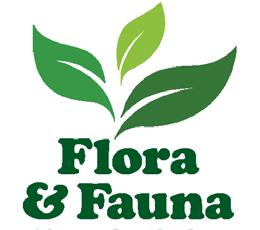
As a community we all have a responsibility to protect children. Children rely on the adults around them to protect them and keep them safe and to intervene when a situation arises where they are not being kept safe. If you know of a child who may be in danger, I urge you to contact a child protection agency. What is child abuse? How do you know when you should act? Child abuse is anything that intentionally endangers the development, security, or survival of a child. It is the act of physically, sexually or emotionally damaging a child.
When we hear about child abuse, we all feel bad and don’t know what we can do to help. If you wish to make a difference in the lives of children in Manitoba, I urge you to donate your time or resources or money to this worthwhile organization. If you wish to find out more about Toba Centre I suggest you go to their website at https://tobacentre.ca
If you wish to report a case of child abuse, you may call 204-944-4200 or Winnipeg Police Services at 204-986-6222.
*Information taken from the website of Toba Centre. • • •
Hon. Myrna Driedger is MLA for Roblin and Speaker of the Legislative Assembly.

at the Japanese Canadian Citizens Association Dance. In 1965/66, Barry Carlson edited the Student Prints a St. James Collegiate Newspaper.
Bill Hobson became an Honorary life Member of the Winnipeg Minor Hockey Association.
Gord Sparkes's first home was on Brooklyn Street. Gord was the Second on Barry Fry's 1979 Manitoba Men's Championship team. Gord is a member of the Manitoba Curling Hall of Fame and a Life Member of the Manitoba Curling Association.

In the early 2000s Jennifer Jones lived on Brooklyn Street. In 2005, Jennifer made what is known as the Shot to win the Scotties. Jones was able to score four to defeat Jenn Hanna eight to six. Jones has 11 Manitoba Championships, six Scotties and one Olympic Gold and counting.
Many Brooklyn Street residents distinguished themselves in various professions. Albert Knight worked for 36 years as a delivery driver at Eaton’s. Don McLellan worked for 36 years at the Winnipeg Free Press. Robert Todd worked at CPR for 43 consecutive years. In 1971, Al Price who grew up on Brooklyn became the manager of Canada's first A & W at 3095 Portage Avenue. Tony Miguez worked for 22 years in the family refuse business and 24 years in a supervisory position with City's Public Works Department. Shirley "Ginger" Miguez worked as a swimming instructor and Lifeguard at the Sherbrook Pool and YMCA.
In the early 1960s the Charleswood Brooklyn Street was renamed Lynbrook Drive.
We have now mentioned over 1,100 St. James Residents in this series. I am sure that we will reach 2,000.
Fred Morris is a Grandfather, Sports Fan and Political Activist.
Dear friends,
The holiday season means many different things to Manitobans. I hope that for you, the season brought you gifts of time for contemplation and gratitude, meaningful connections with people you love, and a spirit of hope and optimism for the best of what is to come in the New Year.
Over the past few months, you may be aware that the Manitoba government has been engaging with thousands of Manitobans from all walks of life to build a plan for older Manitobans and to enable seniors to live their best, most independent, and healthiest lives.
sure that seniors can live healthy and active lives, safely and independently and in their own homes and community for as long as possible. We know this is of primary concern to seniors and those who love them.
Our government is strongly committed to ensuring that supports and resources are available for the transitions between living settings; from living independently in your own home and community to living in another setting. We are also dedicated to ensuring that quality, dependable and affordable supports are available when independent living is no longer possible.
Hon. Scott Johnson Minister’sOur expansive public engagements have been in-person and online at engagmb.ca and have included many focus groups, consultations and work with organizations representing and supporting seniors, Indigenous organizations, and connections with every day Manitobans who are seniors, who live with and care for seniors, and those who work with seniors. It was also my pleasure to travel across the province and meet with Manitobans in many communities, to hear their concerns and desires.
MessageNow that we have completed the work of asking Manitobans what they would like to see in the seniors strategy, the results of what we heard are being thoroughly evaluated and the strategy is being written.
As a senior, you have spent your life working, raising families, volunteering, and supporting and building your communities, and it is my honour to serve and support you as we prepare to share a plan that will make Manitoba an ideal place to age, live well, and prosper.

tobans have shared with us in the consultations. It is expected that I will deliver the plan that reflects what we heard from Manitobans, before spring is upon us.
For more information on Building a Plan with Manitoba Seniors, please visit: https://engagemb.ca/ building-a-plan-with-manitoba-seniors

The seniors strategy will lay out clear plans to en-
I look forward to sharing with you what Mani-
Scott Johnston is the Minister of Seniors and Long Term Care


When it comes to political platforms, there isn’t much to learn from researching Wab Kinew’s political beliefs and his plans for Manitoba. He seldom says anything of substance about anything, repeating the same old platitudes time after time about P.C. privatization plans (as if that was a bad thing) and what he calls cutbacks, and the Tories call reforms to health care.

Many people are genuinely interested in hearing what the NDP would do if they were in power. While it is hard to discern this from their communications, we know what they won’t do. They won’t allow any new mining projects.
The Manitoba NDP passed a resolution called “Keep it in the Ground,” which was approved by party members at a convention in 2017. This is in line with Wab’s signature on the Leap Manifesto which says, “There is no longer an excuse for building new infrastructure projects that lock us into increased extraction decades into the future. . . .
That applies equally to oil and gas pipelines . . . increased tanker traffic off our
coasts; and to Canadian-owned mining projects the world over.”
That pretty much puts an end to the new economy the Progressive Conservative government is trying to help Indigenous communities build in northern Manitoba. This plan would support new rail access to the North and attract an extraction industry pledged to hiring local First Nations citizens, send their kids to school so they can enjoy the higher paying jobs, and bolster their lo-
cal economy and standard of living. The manifesto also calls for an end to all trade deals except under specific conditions, which would devastate a province such as Manitoba where exports, not only of raw materials but of manufactured goods from heavy equipment to agricultural products, are our lifeblood and the generators of highly paid union jobs to the working populations.
So, if Mr. Kinew is determined (and
Continued from page 1
lies, taking on the system, holding people in power accountable, and asking tough questions. I will continue to do that for all residents of Kirkfield Park, whether you voted for me or not.
We face challenges going into 2023. Violent crime in our communities is at a crisis level. All across Canada, provinces are dealing with a fractured healthcare system, and it is becoming more challenging to pay daily bills.
I am encouraged by the actions Premier Heather Stefanson and our PC Team has begun to implement, but we have more work to do. I will work diligently with our Premier and each of my colleagues from
every party in the legislature on solutions to address violent crimes, find more answers to improve patient care, and make life more affordable for everyone.
he has pledged to do these things) on policies that will shut down mining, refuse international trade unless if satisfies his party’s conditions, refuse to allow the transport of Alberta crude through our province (wonder what he will do with the pipeline that already crosses Manitoba’s south) but still somehow find the money to cure the health care ills that his government created over 30 years, and keep people from well-paying jobs, he must have some sort of magic wand that nobody else has.
This is an election year. We know what the PCs stand for and what they will do. Heather Stefanson is very sure footed when it comes to plans for a better economic status for Manitoba. It is up to the NDP to tell citizen where they stand, if nothing other than to reassure their own shaky base of solid, old labour supporters who no longer know what party understands them or is actually on their side. For sure the government-based unions are happy but what about all the retail workers, the factory workers, the construction and trucking folks, not to mention the miners?
As they say, this is not your father’s NDP.
Building a better community and province for everyone won’t be easy, but it will be worth it. We all know the nay-sayers will put up a fight and say or do whatever it takes to make you think we can’t succeed, but if we work together, anything is possible.
I will fight for your priorities, safer neighbourhoods, value for your tax dollars, and improved patient care. I will work to help our community centers, seniors, and business owners in our community. But, most importantly, I will return your calls and emails.
Heather and I wish you and your loved ones a Happy and Healthy New Year!
 Dorothy Dobbie
Dorothy Dobbie
Removing the barriers from Winnipeg’s most famous corner would remove the psychological barriers that have seen us shrink from being Canada’s fourth largest city to its eighth.
Mayor Brian Bowman promised in 2014 to reintroduce Winnipeg foot traffic to Portage and Main, but here we are in 2023 and those ugly and soul deadening barriers are still in place, now made even uglier with a wash of fading colours. Portage and Main represents the heart of our city.
Now, new and excited ownership of the Bank of Montreal at the southeast corner offers new opportunities for rebirth. Will we take advantage of it?
The heartbeat of our city seemed to slow around the same time the barriers were erected 44 years ago in 1979. Winnipeg’s downtown began to decline. We entered a period of very sluggish, almost non-existent, growth as government manipulation tried to set the path forward: the very expensive deal with Trizec being the first (it is estimated that the enticement offered by the city equalled the total investment by the company), followed by the white elephant that is Portage Place in 1987, which killed three blocks of local free enterprisers who had made shopping downtown a pleasure for a hundred and more years. During that period we fell from being the fourth largest city in Canada to its eighth, just ahead of Hamilton!
Portage and Main has been the scene of countless important community events over the years, from protests such as the Winnipeg General Strike in 1919 to celebrating the end of two World Wars. It is the place where we come together to express our joy. When the Winnipeg Jets won a spot in the playoffs for the first time. Winnipeggers naturally flocked to the city centre, converging on the intersection despite the barricades.
At one time, it was assumed that what is now Broadway would become the main east-west thoroughfare in Winnipeg, but ever since McKenney’s General Store opened at the corner where two ox cart
trails intersected, 155 years ago in 1862, the location at the end of the road leading to Portage La Prairie seems to have had a kind of magnetic force that drew traffic to it.
Within a single decade, by 1872, the intersection had become the heart of an emerging town. Another dozen years and the shape of the city to come was already evident with Portage and Main surrounded by substantial and imposing looking buildings.
Over the years, the corner has had many affectionate slings and arrows directed its way. It was labelled the windiest corner in Canada and it was once claimed to be so hot that you could fry an egg on the pavement. There was a postage stamp dedicated to the corner in 1974. Songs have been written about it: Blurt, a British band, has a song called Portage & Main on their Kenny Rogers' Greatest Hit album and Prairie Town
by Randy Bachman talks about Portage and Main. There is even a Vancouver rock band named Portage and Main.
Despite all this, and much more, there are those who continue to defend the barriers, claiming that removal would create impossible traffic jams from pedestrians crossing the street. This objection is self-revealing since there are not enough people on the street today to cause any kind of a problem, but the objection proves the point in that, clearly, removing the barriers is seen even by its detractors to be a magnet for pedestrian traffic. Surely that’s a good thing for downtown.
Apparently, according to several news reports, the barrier-supporters tend to be motorists who don’t work downtown. That’s not surprising since anyone who does inhabit that space knows that it’s far quicker to walk half a block to the end of the barriers and dodge traffic to cross the street. Many do this. Going underground can take anywhere from three to six minutes depending on whether you know where you are going or not.
Some worry that returning traffic to the street would hurt the businesses underground. Far from true, since only a few hotel guests and the workers who inhabit the office towers surrounding the underground mall or those who use the indoor walkway go there now, and most will continue to shop there when the street opens. If the concourse had to rely on people from other parts of the city, the shops would go broke very quickly.
Removing the barriers would do so much more than put people back on the street. The act in itself would symbolize a new beginning where people once again mean more than automobiles. It would return to us our natural gathering place, our town square, that no other space can emulate.
Far from stifling business, the opening up of Portage and Main could bring life back to the heart of the city, stimulate new enterprises and just let us psychologically breathe again. We’d still have the option of going underground in winter. But in summer, just think of the possibilities when people return to our most famous corner.
can’t grow, we will not be able to sustain all those services people in this province have come to take for granted.
As I write this on the eve of the New Year, I am filled with hope. The COVID-19 crisis is pretty much behind us as we learn to live with the virus, and all that remains now is the aftermath that will continue for a while to affect our slow but sure return to normal. Restaurants are gradually reopening. People have just reunited with loved ones after several years of delay. Waiting rooms are not now so desperately overcrowded as flu season subsides. Despite the Christmas debacle, the airlines will continue to get back on track.
And best of all, spring is on its way. The days are already getting longer. By the time January ends, daylight will be extended by a whole hour and a half and, by the end of February, we will be enjoying almost 11 hours of light. For a gardener, this is big news, but it is big news also for those who are light sensitive and who rely on sunshine to make them happy.
Things we know or think we know
So, here are some things we know coming up in 2023. There will be a coronation for the new King, something that gets tongues wagging and minds off everyday issues. The International Peace Garden will open its new conservatory and be able to welcome Manitobans once again without the dread of dealing with the AriveCan app.
It is election year in Manitoba on October 3, and you will be asked to weigh the choice between a government focused on growth and prosperity and one focused on the transfer of existing resources. You know where I stand. If we
There could also be a federal election although everyone is busy denying its possibility. Still, Liberal ridings have been told to get their nominations completed. According to a recent Ipsos poll, 49% of Canadians want an election in 2023 and 53% think Justin Trudeau should step down, although few believe he will do so. Pierre Poilievre currently has the lead as the preferred leader at 35% to Trudeau’s 31%. But he has not galvanized the population at large the way he did with the Party members. In my personal view, he needs to lighten up a little and remember how to laugh at himself. And he needs to recognize that Trudeau is a very good campaigner.
Things we need to fix
On the economic front all bets are on a slowdown in the economy, but Manitoba’s diversity has always buffered this. With the current demand for critical minerals, of which we have an abundance, we are well positioned to weather the storm and come out ahead. However, for this to happen a few serious changes must be made.
In my view, Manitoba Hydro must dispense with its absentee president. When Edward Kennedy was named chair, I was hopeful that this critical decision would not be far behind, but so far, Jay Grewal remains in place and Hydro continues to bumble along. The corporation needs tough, strong leadership and full-time attention. The new CEO has to be ready to respond to marketplace requirements and work with investors who need power in the north to move forward.
We also need a compliant Treasury
Board that does not take forever to make things happen. Their sloth will not serve with so many critical and urgent issues to address this year.
Most of all, people need to get back to the office. It simply is not productive to work in isolation. While this serves a few withdrawn types, the vast majority are stimulated by person-to-person contact. Governments are especially at fault here. with some public servants claiming they will never be back at the office full time. I have been speaking to public service managers in Ottawa. They feel the pressures of a non-available workforce, but they are not getting the political support they need to order people back to the office. Hence, continued long waits for passports and a payroll service that still does not work after seven years.
My New Year’s wish list Here in Manitoba, we need some big news to bolster spirits and get people working again. For my part, I would like to see a tripartite agreement between the three prairie provinces to support NeeStaNan. This is the new railroad that will skirt the boggy land of the Arctic Gateway line and terminate at a year-round port at Port Nelson.
I would like to see the finalization of the plan to build a lithium processing plant in CentrePort and I hope to see new mining announcements as the government reopens the North.
I also hope to see progress on the plan to create a duty-free port at Emerson to modernize our main border crossing and expedite trade north and south.
I would like to see housing for the homeless dealt with quickly and effectively. No more platitudes. Get it done. As for clean injection sites, I don’t think they will solve anything but if that is
what it takes in the short term to mitigate some of the problem, then do it. And build some long term and properly run public washrooms downtown.
In the city, there is growing interest by citizen groups to facilitate a clean and green downtown. The Green Corridor initiative for East Graham led by the Anglican Church and its pastor Andrew Rampton and former pastor Cathy Campbell, is one. Kudos to Councillor Sherri Rollins for her support. The U of W is also looking for solutions on the west side of downtown. And we are all eager to see the plans for both the old Hudson Bay store and the former Bank of Montreal now both owned by Indigenous communities. Kudos also to Councilor Janice Lukes for getting the Parks Department to list the numerous parks and gardens of the city. Now we must make sure we have photos and maps to market them.
Work is underway by Treaty No. 1 to develop the former Kapyong Barracks and I am heartened to hear that the idea of a private health facility including a training hospital and wellness centre is still on the drawing board. This could be a game changer for both the local Indigenous community and the rest of us who are looking for alternatives to the turgid bureaucratic system. I am committed to helping them discover a way to make it happen.
Mostly, I wish for a positive attitude among Manitobans. We can make anything happen if we work at it! It is up to us as citizens. It is not up to government. It is time to accept our responsibilities as an engaged community that knows its obligations as well as its privileges.
Let’s make 2023 rock!
As we walk through the pretty town of Minnedosa, which nestles in the Highland district of Manitoba on the Southwest side of the Riding Mountain and in the deep valley of the Little Saskatchewan River, we notice impressive old buildings and at the same time appreciate the hard work and amazing construction skills of the people in the town’s early days. For a long time, Minnedosa has been a thriving town provided with the mills, elevators, good schools and church buildings.
The first houses were made from logs, natural building material provided by a plentiful supply of poplar trees.
Another important collection of heritage buildings from the pioneer’s phase was made from large granite field stones. One of the few remaining stone dwellings built in the late 1800s, a nice example of fieldstone construction is McKay house. This house was built by its first owners, Mary and James McKay.
James McKay was a stonemason and carpenter who constructed several other buildings in the area. What defines this historic place, designed in Gothic Revival style, are specific external and internal elements. Built in an asymmetrical, L-shaped plan with a large cross-gable roof and gable-roofed dormer window, this fieldstone construction allows a perfect spot for a wood-frame summer kitchen with a hipped-gable roof and original tongue-and-groove board siding.
Inside, a north-side parlour was used for a kitchen, and the living room and summer kitchen were placed on the south. Dark stained woodwork and walnut floors, and an extravagantly crafted staircase, and ornate door hardware, complete the decorative domestic aspect of Southern Ontario Gothic Revival Style.

Lying at the foot of Pembina Mountain on the west side of the Red River Valley in Southern Manitoba is the town of Morden, with a population of some 8,665 residents. The city is blessed with fine, old buildings such as the sturdy yet attractive Court house, the Arlington hotel, the Post Office, and the Land Titles Building.
There are many private homes of early frame construction, and Victorian houses made both from wood and stone, with charming verandahs.
McConnel House is a large Victorian style residence built in 1899 for Dr. B. J. McConnel, the first medical practitioner and a businessman in Morden. This house is a fine example of using primary construction material. The walls are made from cut fieldstone granite. There is a complex floor plan with rounded forms and a variety of openings, Palladianstyle dormer windows demonstrate the substantial house building tradition of south-central Manitoba at the turn of the twentieth century.
In the Central plains Region of Manitoba, approximately 75 km west of Winnipeg, there is a small and charming city of Portage La Prairie, a place with the most sunny days during the warm months in Canada. It is also one of the few places in Canada where the two national railways meet, Canadian Pacific Railway (CPR) and Canadian National Railway (CNR).
The large museum, Fort La Reine, is home to over 25 heritage buildings and is dedicated to preserving the natural and cultural heritage of the Prairies and of the City and Municipality of Portage La Prairie.

The collection of homes shows a different era of pioneer living, it covers the lifestyle of a prairie com-
Len Andree was born in Winnipeg on March 2, 1930. He was the third child of Polish immigrants Paulin Thadeus Andree and Mary Andree. He lived on Boyd Avenue in Winnipeg’s storied North End. He married Lois, his high school sweetheart and the love of his life. They moved to East Kildonan and finally to Southdale.
He counted among his many friends former sports broadcaster Bob Picken sports media icon and another Winnipeg legend, award-winning actor and producer Len Cariou. In his younger days he worked at Canadian

Pacific Rail while entertaining on the side. He started out as a professional clown, doing impressions, pantomime and vaudeville characters eventually breaking into both stage performing at Rainbow Stage and then radio and television. He soon started his own talent agency, Andree Productions, booking and promoting countless acts including singers, clowns and popular bands of the time. One such upstart was a young performer Ray St. Germain.
Always the consummate entertainer, Len sang in the same barbershop quartet for 30 years. He emceed at the Red River Exhibition for 39 years and performed in Schmockey Night for 35 years. He originated Breakfast with Santa at the downtown location of the Hudson’s Bay Company for 39 years! He was a founding member of and Past Chief Barker the Vari-
munity from 1738 to 1950. There are thousands of individual artifacts including pre-European, First Nation’s and more modern collections including historic fire trucks, Fisher’s General Store, West Prospect school, two churches, hand hewn log structures and historic homes.
Other attractions are the world’s largest indoor collection of Allis-Chalmers equipment and tractors, an agricultural heritage barn and garage and Southport Military Building.
The Portage La Prairie Public Building, rehabilitated in 1960 as the Portage La Prairie City Hall, was constructed in 1896 to 1898 as the Dominion Post Office. It was designed by Thomas Fuller, the Chief Dominion Architect of the National Department of Public Works. Three architectural styles are intersected on this building. The influence of French Second Empire style reflects in symmetrical bays and flanking front entrances, the mansard roof and the classical details. High Victorian Gothic style is recognized by attention to the color and texture of the stone, and varied roofline. Completed with Richardsonian Romanesque styles, wide voussoir trim (a wedge-shaped or tapered stone used to construct an arch) over the doors and windows.
ety Club Tent 58 for 35 years. On top of that he managed the R/V Show for 27 years and hosted Octoberfest for 15. He was a prolific and sought after emcee for countless events in the city including the brand opening of the Centennial Concert Hall. In recognition for his community service he was presented with the Queen Elizabeth II Golden Jubilee Medal in 2002.
Len was always creative and imaginative in all he did. His quick wit and delivery made him an excellent stand-
up comedian and emcee. He would take every opportunity to get a laugh at a show, church, nursing and even at a funeral. He always had a soft spot in his heart for children. Whether doing puppets, picnics or Christmas shows, he wanted each child to take part in the program or to win a prize.
Len loved spending time with his family, playing in the pool, working on projects, gardening or playing the organ. Summers were spent at Sandy Hook where he was very involved with the community club. He always enjoyed boating and cheering on the Blue Bombers. He especially loved travelling with Lois to new destinations or to their favourite winter hideaway in the Bahamas.
Len Andree died on October 4, 2017. He was predeceased by his wife Lois, daughters Lorraine and Vivian (1966) and is survived by his son Brian and his daughter Lisa as well as grandchildren.
Jim Ingebrigtsen submits stories of Memorable Manitobans to Lifestyles 55. To see more than 12,000 others please go to mhs.mb.ca.

Many stories involve heroes setting out on great adventures. Some involve quests to defeat dragons or rescue royalty stuck in towers. These heroes are never alone in these challenges; they succeed with the help and support of those around them. This year, at Children’s Hospital Foundation, we’ve undertaken many quests (although we haven't defeated a dragon yet), and the successes are thanks to the continued support of the community, like you, who help ensure kids like Emma, James and Jenalyn get the best possible care at HSC Children’s Hospital. Here are a few of the quests we’ve been on together in the past year.
Thanks to donors who showed kids their hearts, the new Travis Price Children's Heart Centre opened! This campaign that began in 2019, spearheaded by Barb and Gerry Price, helped build a new, world-class heart centre, cardiac catheterization lab and fluoroscopy lab that now helps more than 6,000 kids receive life-saving care and treatment right here in Manitoba. But donors didn’t stop there! They also rallied together to extend remote monitoring capabilities and support other areas of need for kids in the hospital.
Many quests are ongoing, like the Better Futures campaign, which is already more than 70 percent of the way to the historic goal of raising $75 million to transform children's healthcare and research in Manitoba. Although the campaign began quietly in 2019, we held a celebratory kick-off took this year to thank current donors and encourage the public to rally and raise the remaining 30 percent of funds. The Better Futures campaign will support strategic priorities of critical infrastructure and facilities, leading-edge pediatric research, and innovative programs to support children in hospital.
Grande Healthy LivingThanks to the generosity of Sobeys Family of Support, Children’s Hospital Research Institute of Manitoba recently launched PRIME, a research theme dedicated to developing innovative mental health programs for children and youth. PRIME will create infrastructure, resources, and advisory groups that can accelerate the development of evidenced-based services that improve child mental health.
Stories have many heroes, and one of ours is Keira Davlut, Manitoba's 2022 Champion Child. Keira has been sharing her story at more than 40 events and speaking on behalf of the other 130,000 kids annually who continue to need care at the hospital.
This past summer, the new Outdoor Play Area at the HSC Child and Adolescent Mental Health inpatient unit opened, allowing kids an imaginative and interactive area to exercise and enjoy their own adventures outdoors while staying safe and secure. Donors like you made this possible and continue to support the need for safe indoor play space for the more than 1,400 kids and teens who need an urgent mental health support.
Fundraising for the Indigenous Community Healing Space and Children’s Hospital Emergency revitalization continues. Both areas are vital in providing safe places for children and families to get the best healthcare and support possible at Manitoba’s only Children’s Hospital.
These quests, like those in the stories, could only be completed with the help of the heroes, like the volunteers who brought back the Children's Hospital Book Market for the first time since 2019. Or the families who adventured to Candy Castle and raised $650,771 at the Ice Crystal Gala. Other donors took up their clubs to raise over $264,000 at the Foundation Golf Tournament.
Thanks to trained fliers from Voyageur Technical, the RCMP Emergency Response Team and the Winnipeg Police Service Tactical Support Team, heroes like Batman, Spider-man and Supergirl rappelled down Children's Hospital windows to wave hello to kids. Capes and costumes, along with safety harnesses – provided an unforgettable Halloween celebration.
2022 has been full of heroes and adventures, all for the most remarkable quest of continuing to give the children of Manitoba the best possible care in the land. As we close the chapter on this year, we look forward to starting next year's story with your continued support and commitment. Thank you!

Stefano Grande is the president and CEO of Children’s Hospital Foundation of Manitoba.


The holiday season often comes with an over-indulgence of food and drink. Many people seek wellness advice after the holidays, as the arrival of a new year can provide a great opportunity to reset and establish better health habits. Some of the most common questions I hear after the holidays are about weight loss, cleansing, and detoxification. While many want to drop a few pounds in January, I like to look at a broader approach to achieving these goals. According to the World Health Organization, we need a balance of nutritional, physical, mental, and emotional health for optimum wellness.
can increase, potentially contributing to a variety of health concerns. I recommend drinking a super green or red food powder on an empty stomach every morning. Combined with rice bran solubles and water, this powerful mixture will help support the liver, our primary detoxification organ. In addition, probiotics and fibre supplements can assist the body’s natural detoxification processes.
When it comes to our physical health, the ultimate goal is to be able to perform the basic activities of daily living easily, without pain. We want to wake each morning with sustainable energy that lasts all day long, to be free of illness, and maintain a healthy body composition.
For many people, achieving our ideal weight (or just losing that last 10 pounds) cannot be easily achieved through diet and exercise. Intermittent fasting, where you fast for one or two non-consecutive days each week, can make an incredible difference for weight management and overall health. Fasting has clinically proven benefits that include improving mental function and memory, preventing dementia, controlling blood sugar, and lowering IGF-1 (a protein highly associated with cancer). To learn more, I recommend the book “The Complete Guide to Fasting” by Jason Fung, M.D.
I am generally not an advocate of cleansing supplements. Our body has the innate ability to eliminate toxins, but unless our diet and lifestyle choices support these natural processes, our toxicity levels
According to Bruce Ames, Ph.D., we need about 40 essential vitamins, minerals, essential fatty acids, and amino acids each day. Missing a single nutrient can result in DNA damage that is the same as being exposed to radiation, and according to Ames’ research is the cause of the four diseases of aging: cancer, cardiovascular disease, dementia, and immune system dysfunction. I like Michael Pollan’s advice, “Eat food, not too much, mostly plants.”
Avoid breaded meats and foods that contain high fructose corn syrup, sugar, white rice, and refined flours, which increase insulin and blood sugar levels. Controlling blood sugar and insulin is the most important key to achieving optimum health. Eat fresh whole foods you have cooked (or you could cook). Include dietary supplements to ensure you get all the nutrients required each day.
Mitochondria are the “energy furnaces” of our cells. The mitochondrial free radical theory of aging outlines a process where normal cellular metabolism results in oxidative damage that is linked to aging. Dr. Ames found that a combination of alpha lipoic acid and acetyl-L-carnitine gave sedentary older rats the energy and vitality of young rats, with a reversal of brain loss. Other supplements that may reduce the effects of aging and increase lifespan include oxaloacetate, resveratrol, astragalus, berberine, and Pycnogenol.
Boosting Nitric Oxide
Nitric oxide (NO) is a gas produced by the lining of our blood vessels that regulates circulation. There isn’t a single disease that is not affected by NO production, which is foundational to how the body works. NO stimulates the brain and supports the elimination of potential threats like bacteria, fungi, viruses, parasites, and other infectious agents. NO helps white blood cells defend against tumors and cancer cell proliferation, maintains gastric mucosal integrity, helps prevent ulcerative colitis, regulates blood pressure, controls blood flow, and plays an important role in our sense of smell.
The supplements Neo40, Pycnogenol, and quercetin can enhance the production of NO. You can boost NO levels by consuming vegetables high in nitrates, including spinach, kale, arugula, Swiss chard, and beets. Foods rich in nitrates, along with a multivitamin, omega 3, and vitamin K2 supplement should be part of everyone’s nutritional program.
Inflammation is often caused by chronic low-grade infections that we may not notice, often occurring in the mouth. This type of inflammation depresses the immune system, increasing susceptibility to colds and flu, and is associated with most age-related diseases, including heart disease, prostate enlargement and infection, and some forms of cancer (lung, kidney, prostate, oral, and pancreatic). As it accelerates the aging process, this type of inflammation is called “inflammaging.” I have seen the complete reversal of periodontal disease with a combination of the oral probiotic saccharomyces salivarius (BLIS K12), a welldesigned toothbrush, regular flossing, a proxy brush to remove interproximal plaque, and an oral irrigator. In addition, you can help reduce inflammation by sleeping on an earthing sheet, avoiding inflammatory foods containing omega-6 fats and sugar, and with anti-inflammatory dietary supplements like curcumin, boswellia, coenzyme Q10, and omega-3 essential fatty acids.
The billions of beneficial or “good” bacteria that live on our body and in our digestive tract are critical to the production of enzymes and absorption of nutrients from our food. They play a key role in balancing our hormones, improving gut health, keeping our immune system strong (70% of our immune system is in the gut), and preventing disease. You can increase the good bacteria which make up our microbiome by eating fermented foods and taking probiotic supplements.
While exercise is an integral part of attaining good physical health, it’s also important in achieving optimal mental health. In older adults, aerobic exercise performed three times a week for a year resulted in improved memory tests. Lifting weights helps improve problemsolving and multitasking. I recommend a 30-minute brisk walk once or twice each day and a combination of aerobic and resistance exercise. Getting less than 7 hours of sleep each night is associated with an elevated risk of dementia, including Alzheimer’s disease.
Taking up yoga, qigong, or tai chi, learning to meditate, the study of mindfulness, controlled deep breathing techniques, and having a sense of purpose in life that focuses on bringing happiness or pleasure to others, can all help improve emotional health. Vibroacoustic therapy is an exciting brainwave entrainment treatment proven to reduce stress, increase energy, and aid in relaxation and sleep. Research indicates it is effective at improving cardiovascular health, building bone density, and reducing the symptoms of fibromyalgia and Alzheimer’s disease.
By making healthy choices and incorporating some manageable lifestyle changes into our daily routine, we can lose weight, cleanse toxins, boost energy, and make improvements to our health that will last all year long.
Nathan Zassman is the owner and president of Aviva Natural Health Solutions.
What is a funeral procession?
The funeral procession allows friends and family to accompany their loved one to the loved one's final resting place or crematory. An act of solidarity for mourners and a way to honor the deceased, a funeral procession is usually a line of vehicles that travels from a loved one's memorial service at a funeral home or place of worship to a cemetery or crematory.
At the front of the procession: the lead car, usually driven by a funeral director. Clergy may also ride in the lead car. Behind the lead car the hearse is usually placed followed by immediate family and pallbearers riding in limousines or their personal vehicles. Other family and friends follow them in their personal vehicles.
A variety of vehicles are available as lead cars, and the lead car and/or hearse may fly flags to signify the front of the procession, or they may have placards in the windows.
A funeral procession may occur on foot when a funeral or memorial service takes place adjacent to or near the loved one's final resting place or the crematory. In this case, family and friends walk behind a hearse, or the loved one's casket is carried by the pallbearers to the burial site. And lest you think the funeral procession is always a somber affair, in some parts of the world – New Orleans, in particular –
the funeral procession can be a lively event. Often hundreds of people join in a procession as it makes its way through neighborhood streets, walking a friend, neighbour, or stranger to the cemetery, accompanied by laughter, dancing and a jazz band.
Funeral procession etiquette
Whether you are part of a funeral procession or you are driving and encounter one, there are a few rules of etiquette. In the former situation, the rules may be required by traffic laws. They can help you honour and respect the tradition of the funeral procession.
If you're part of a funeral procession:
• Turn on your flashers to alert other drivers you are a vehicle in the procession.
• Form a line and stay close to the car in front of you. This helps ensure the procession remains together and is not interrupted by other drivers on the road. Do not leave your place in the procession unless there is an emergency.
• Drive slowly. It is common for funeral processions to drive at or below the posted speed limit.
• Pay attention, stay alert and do not use your phone while driving.
If you encounter a funeral procession on the road:
• In many provinces, local traffic ordinances give a funeral procession the right-of-way and other mo-

torists are expected to yield. Unless doing so will impede traffic around you, yield to the vehicles in a funeral procession, even if you have a green light. It's just a nice thing to do.
• Don't join or cut off a funeral procession. This could result in a dangerous domino effect of traffic accidents within the procession.
• Don't honk your horn at a funeral procession.
• If a funeral procession is on the highway, don't pass on the right unless the procession is in the far left lane.
• Once the last car passes, you may continue your drive. If you're at a red light, wait until it turns green before proceeding.

Many provinces don’t have funeral procession laws. In regions that do, the laws vary. The biggest area of concern and confusion about a funeral procession is intersections.
Some local traffic ordinances allow funeral processions to proceed through an intersection or traffic signal – even a red light or stop sign – except to yield to emergency vehicles or police. You should never assume that's the case, however.
In almost every jurisdiction, the lead car must obey traffic signals at intersections, thus stopping at a red light or stop sign.
If you're unsure of the laws in your area, ask your funeral director for guidance, search online for your province's laws, observe how others around you are driving either in the procession or when they encounter it and always proceed with caution.
Iflew back to Abbotsford, BC, a couple of Christmases ago and while there watched my 9-year-old grandson play hockey. I had not seen him play before and I was quite surprised at the skill level exhibited. Asher did play in a league but the game I was watching was supposed to be a noncompetitive game. There was no time clock and nobody was keeping score. The game was just for fun, but by the way they played, apparently no one had mentioned that to the boys. After the game Asher came up to me and I said, “Boy, Asher, you sure played hard out there.” He nodded and gestured to me, indicating that I should lean down to his level. I bent down and he glanced around, almost furtively and whispered. “They weren’t keeping score, but Grandpa, we won!”
tive element from things kids participate in, every day. Schools no longer award grades; some schools have eliminated programs that focused on further advancing gifted students. There are no first, second, or third place awards. Everyone who attends a sports day gets a participation ribbon. The thought behind this is that kids who are not as talented will be hurt, will feel left out, will feel that they are not as worthy. Perhaps their feelings will be soothed, but at what cost?
Rick Duerksen ReachToo many times, to not hurt young kid’s feelings, we remove the competi-
During my first group meeting at the Addiction Foundation of Manitoba, my counselor asked me what I wanted to take away from my time at AFM. What was my goal? I said that I did not want a participation ribbon. I was not going to settle for anything less than the blue ribbon. I was going to win, I had to win, because for me not winning wouldn’t just mean a loss. I had skated too close to the edge, too many times. For a long time, I had played with my
life as if I was in the exhibition series, as if I still had the whole regular season to secure my place in the standing. But suddenly I found myself on the ice, in what was, as Stompin’ Tom sang, “The Third Period. Last game of the playoffs, too!” Except it wasn’t the third period. The game was actually in overtime, sudden death overtime. It was me versus alcohol, and alcohol had a formidable team, a team whose players were sore losers and playing dirty was not beneath them. I had played on their side for so many years that they knew my strengths – not many – and my many weaknesses. Now, suddenly, I was up against the same team I had cheered for. What chance did I have when I was hands down the underdog?
I wasn’t going to settle for second place, I wasn’t going to fail. I couldn’t afford to fail. All the quotes about trying and failing and then trying again, didn’t apply to me. I had run out of chances. The past opportunities that I had thrown away were just that. Past opportunities. The doctor who looked after me while I was in the Critical Care Unit at VGH told me that if I didn’t stop drinking, I would probably not
A26-year-old man decided to have a cup of coffee. He took a cup of water and put it in the microwave to heat it up (something that he had done numerous times before). I am not sure how long he set the timer for, but he wanted to bring the water to a boil. When the timer shut the oven off, he removed the cup from the oven. As he looked into the cup, he noted that the water was not boiling, but suddenly the water in the cup blew up in his face.
The cup remained intact until he threw it out of his hand, but all the water had flown out into his face due to the build-up of energy. His
whole face was blistered, and he had first- and second-degree burns which may leave scarring. He also may have partial sight loss in his left eye.

While at the hospital, the doctor who was attending to him stated that this is a fairly common occurrence and water (alone) should never be heated in a microwave oven.
In checking out this story, here is General Electric's Response:
Thanks for contacting us; I will be happy to assist you. The e-mail that you received is correct. Microwaved water and other liquids do not always bubble when they reach
boiling point. They can get superheated, and not bubble at all. The superheated liquid will bubble up out of the cup when it is moved, or when something like a spoon or tea bag is put into it.
To prevent this from happening and causing injury, do not heat any liquid for more than two minutes per cup. After heating, let the cup stand in the microwave for thirty seconds before moving it or adding anything into it.
Keep this is mind when you use the microwave for heating that cup of tea. To be safe, add a chopstick, stir stick or wooden spoon to the cup to break the tension.
survive another week. Suddenly, the desire to win became the need to win. But what would I need to do, to win, and how would a victory be determined?
I knew it would involve a lot more than just being sober. Just being sober just meant that I wasn’t drinking, and I would just be a dry drunk. I had to change my approach to life. I would have to recover. Recovery, I was told, was a process of change through which I would work to improve my health and wellness, live a self-directed life, and strive to reach my full potential. I could be sober without recovering, but I couldn’t recover without being sober.
I read once, that a military victory was a condition where the enemy's ability to enter battle, resist or resume hostilities is destroyed. My enemy’s name was alcohol, and I was going to score a victory over it. Nothing else was acceptable. Failure, as it has been said, was not an option.
When my game of life is over, I want Asher to be able to say, “Boy, Grandpa, you sure played hard out there!” And I would like him hear me say, “They were keeping score, and Asher, I won!”
I can be reached at hangar14@telus.net

Winter with its short days and long nights, its cold winds that chill us to the bone, and the cold stark surround of white everywhere you look, makes you hunger for something hearty. There are things that I look forward to at this time of year. This is the best time to serve up some good old fashioned staple food. Beef Stroganoff is just that; a hearty and warming meal, giving a sense of comfort from within. With flavours abound and dreams of the past.
Of Russian origin, this meal or its variances has been in existence since the early 1800’s. The dish was invented by none other than Count Pavel Aleksandrovich Stroganoff himself. He was a rather dashing chap in his day by all accounts.
Beef Stroganoff has a flavour that seems to caress the body from within as it heats us up internally. Yet it is a simple dish of thin strips of beef cooked with onions, mushrooms, and seasonings, served in a sour-cream sauce. These few ingredients are what is used to make a classic beef stroganoff sauce, a combination of pearl onions and shallots give the finished dish a more interesting texture and flavor. Why not try this one out or perhaps you have a different recipe, care to share?
Here is what you will need: 600 grams ribeye steak 3 tablespoons extra virgin olive oil
1 medium yellow onion ½ cup pearl onions
½ cup chopped shallots
1 ½ cups button mushrooms quartered
4 tablespoons unsalted butter 2 tablespoons regular flour
The all important how to: Tenderize the steak gently with a mallet. The goal is to have the meat at a maximum of ½ inch thick. Slice into thin stirps and set aside, season with salt and pepper.
Place a skillet on the stove on a high heat then add a tablespoon of extra virgin olive oil, place half the seasoned steak into the skillet and cook on one side for 30 seconds, then turn over, cooking for a further 30 seconds.
Then remove from the heat. You are just looking to sear the meat, once it is placed in the stroganoff it will finish cooking. Add the remaining oil and repeat the exercise with the remaining steak, then set to one side.
Turn the heat down to a medium, then add two tablespoons unsalted butter and let it melt. Place the onions and shallots into the skillet and cook for one minute, then add the mushrooms. Cook mushrooms until they appear golden, then remove capturing all the goodness at the bottom of the skillet.
Add the remaining butter to the skillet and let it melt. Add the flour and stir until you have a paste-like compo-
sition then add half of the stock, stirring as you do. Add the mustard and continue to stir. Add the remaining stock and sour cream stirring all the while.
Reduce heat to simmer, stirring occasionally. Once the sauce has reached a consistency similar to that of half and half cream it is time to add the pearl onions and steak. Simmer for 1 ½ minutes then remove from the heat.
I love this dish over egg noodles with a sprinkle of chives for decoration. But like I always say, it is up to you. You could have pasta or mashed potatoes. Happy New Year.
Ian Leatt is general manager of Pegasus Publications and a trained chef.

Is an idle mind really the devils workshop? If so, he must be really good at home renovations. Its easy for many of us to fall afoul, sticking with what is old, tried and tested. We do all tend to get stuck in our own little ways. Is it fear of change? Perhaps, but without starting we will never move on.
With it being the new year, my thoughts are on all things new, so why not look at the new trends for 2023 in renovation continuing to improve on the return on investment.
Top trends for 2023: More windows, larger windows
We all know windows let natural light in. But there is so much more to it. New windows can make a statement. Be bold with your ideas. Consider floor to ceiling windows, focal points, what about adding windows to a somewhat dark room.
The big trend this year is bringing as much natural light as possible into any and all rooms. This not only makes your home more beautiful, but it can make
rooms feel that much larger. The latest new style windows are security driven, have the latest UV blocking technologies built in leading to lower lighting requirements which may help reduce energy costs.
It was the heyday of the 1970s wherever you went wallpaper was there, and yes, it is making a comeback in a huge way. We know that painted accent walls are on point, but so too is bold designed wallpaper. Currently interior designers around the globe recognize the impact this new fad is having on homes both old and new.
From small cloak rooms to large living areas, bold new styles of wallpaper create the impact you want. The eye-catching contrasts can fashion a huge statement, you may want to complete the design in one room, or one wall of a room “fun” is what is implied, after all it is the current trend right. Not only will it catch the eye of whomever enters but applying it can be easier than
painting. Bonus, it can be very economical also, helping you keep on budget. Mudrooms made simple
What do you do when you enter your home? The term ‘drop zone’ springs to mind. We all need a place where we transition from outside to inside. A place for shoes, outdoor clothing, coats toques cloves etc.
No matter what space you have, try installing a closet and shoe racks, space can sometimes be an issue, but making this space available will help not bring the outdoors indoors.
Today’s modern trend is to have plenty of built-in storage keeping your personalized paraphernalia organized, handy all the while keeping your home uncluttered and welcoming.
Think open shelving in bedrooms and bathrooms for a little décor and storage. Behind the door hooks, built-in storage. You always get to decide the look of your home. It is really simple to make use of open walls giving yourself more storage, adding a sense of style without taking up too much space.
Islands and what they bring to the kitchen
Yes, kitchen islands have been around for years, but these days they are used
for many things. The trend with homeowners nowadays is to install dishwashers, sinks, garbage pullouts in islands leaving more room throughout the kitchen for other devices.
Bonus, the island is also a crowd pleaser when entertaining guests, who tend to sit at the island while you finish prepping or simply enjoy their company.
At the end of the day, it is always up to you, there is no right way or wrong way it’s a matter of taste. Your uniqueness is what makes it count. Consideration should be given to what lifestyle you live, budgetary constraints and personality that best befits who you are. Whatever alterations you create when it comes to selling your property there will be a good return on investment. The happiest homeowners are the ones who spend time developing spaces that best fit the way they want to live.
Happy New Year may your year be full of fun, laughter, and lots of DIY.
Brent Poole is the owner operator of Handy Hands Construction, which he has run with his father Jim since 1997. A carpenter by trade, Brent enjoys all types of projects. “We’re not happy until you are happy!”

Aging in Winnipeg is a lot different than aging in Florida! With the holidays being behind us, and facing a few more cold months ahead, it is important for all of us regardless of age to maintain a positive outlook. This may be easier said than done. A
& O: Support Services for Older Adults provides many specialized programs and services that can support older Manitobans all year long but may be particularly helpful if you are feeling blue and/or isolated during the winter months.

A & O provides the following counselling services:
Individual and group counselling for older adults 55+
• Registered Social Workers provide a variety of counselling services that address grief and loss, financial issues, depression, family issues, loneliness/ isolation and loss of health
• Consultations with family members
• Intake Worker available Mon - Fri 8:30 am4:30 pm
Support Groups
• Bereavement Support Group



• Moving Forward Group
• Making and Keeping Important Connections

• Because We Care: Carer’s Support Group
• Buried in Treasures (for older adults dealing with Hoarding Disorder)
A & O provides the following programs and services that provide older adults with social engagement opportunities:


Senior Centre Without Walls
This program is the first of its kind in Canada and offers a unique opportunity for Manitobans, 55+, to join educational and interactive programs from the comfort of their own homes. Programming topics include; educational presentations, language classes, book clubs, travelogues and support groups. The free programs are accessed through a toll-free number and are offered during the day and evenings.


Registered Social Workers assist socially isolated Winnipeggers 55+ living in the community by connecting them to resources that will facilitate independent living. Clients of the program may be connected to: Volunteer Visitors & Callers, Community Resources, Senior Centre Without Walls, Safety and Security Programs, Counselling and Support Services.
The program offers a wide range of settlement services for newcomers 55 years of age and over. Our Settlement Orientation for Seniors program is a group orientation where participants learn about important settlement topics such as law, health and safety, housing, transportation, money and banking and community information. Upon completing the orientation, participants are referred to The Winnipeg English Language Assessment and Referral Centre (WELARC) for a language assessment appointment. They may then register for our English Language Program for seniors or are welcome to join one of our English Conversation Circles. A settlement worker is also available to provide additional information about community programs and services, to assist with forms and documents and offer opportunities to connect with other older adults in the community.
You are not alone. Don’t wait, call today! A & O has many supports that can assist older adults in aging well. Phone: 204-956-6440; web: www.aosuppportservices.ca; Join the conversation on Facebook and Twitter!
dauphin

20 Fort Street Seniors Club 2200-20 Fort Street / 204-250-8644
A & O Support Services for Older Adults Inc. 200-207 Donald Street 204-956-6440 / Toll Free: 1-888-333-3121 info@aosupportservices.ca www.aosupportservices.ca
Archwood 55 Plus 565 Guilbault Avenue / 204-416-1067 archwood55mail@gmail.com archwood55plus.wildapricot.org
Bleak House Centre 1637 Main Street / 204-338-4723 bleakhousecentre@gmail.com www.bleakhousecentre.com
Broadway Seniors Resource Centre 204-772-3533 www.bsrc.ca / broadwayseniors@gmail.com
Brooklands Active Living Centre 1960 William Avenue W. / 204-632-8367 bpscc@mymts.net
Centro Caboto Centre (Italian Seniors) 1055 Wilkes Avenue W. / 204-487-4597 ext. 30 info@cabotocentre.com / www.cabotocentre.com
Charleswood Senior Centre 5006 Roblin Boulevard / 204-897-5263 info@charleswoodseniorcentre.org www.charleswoodseniorcentre.org
Creative Retirement MB 204-481-5030 info@creativeretirement.ca www.creativeretirementmanitoba.ca
Crescent Fort Rouge United Church 55+ 525 Wardlaw Avenue / 204-489-1925 www.crescentfortrouge.ca
Dakota Community Centre 1188 Dakota Street / 204-254-1010 ext. 217 melissal@dakotacc.com / www.dakotacc.com
Dufferin Senior Citizens Inc. 377 Dufferin Avenue / 204-986-2608
Elmwood East Kildonan Active Living Centre 180 Poplar Avenue / 204-669-0750 poplarseniors@live.com / www.eekactiv.com
Fort Garry Seniors Resource Council 200-270 Donald Street / 204-792-1913 fortgarry@aosupportservices.ca www.aosupportservices.ca/resources/seniorsresource-finders/
Good Neighbours Active Living Centre 720 Henderson Highway / 204-669-1710 admin@gnalc.ca / www.gnalc.ca
Gwen Secter Creative Living Centre 1588 Main Street / 204-339-1701 becky@gwensecter.com / www.gwensecter.com
Headingley Senior Services 5353 Portage Avenue / 204-889-3132 ext. 3 hdlyseniorservices@mymts.net www.headingleyseniorservices.ca
Indigenous Senior Resource Centre Inc. A1 – 100 Robinson Street / 204-586-4595 executivedirector@isrcwpg.ca / www.asrcwpg.org
Manitoba Korean 55+ Centre 900-150 River Avenue / 204-996-7003 www.ksam.ca
North Centennial Seniors Association of
Winnipeg Inc. 86 Sinclair Street / 204-582-0066 ncsc@shaw.ca / www.ncseniors.ca
North Point Douglas Senior Centre 244 Jarvis Avenue
Pembina Active Living (55+) 170 Fleetwood Road / 204-946-0839 office@pal55plus.com / www.pal55plus.ca
Rady Jewish Community Centre 123 Doncaster Street / 204-477-7539 lmarjovsky@radyjcc.com / www.radyjcc.com
Rainbow Resource Centre 170 Scott St. / 204-474-0212 ext. 211 OTR@rainbowresourcecentre.org www.rainbowresourcecentre.org
The Salvation Army Barbara Mitchell Family Resource Centre 51 Morrow Avenue / 204-946-9153 sheila.keys@salvationarmy.ca
South Winnipeg Seniors Resource Council 117-1 Morley Avenue / 204-478-6169 resources@swsrc.ca / www.swsrc.ca
Southdale Seniors 254 Lakewood Boulevard / 204-253-4599 www.southdale.ca
Sri Lankan Seniors Manitoba 113 Stan Bailie Drive / 204-888-8253 www.srilankanseniorsmb.ca
St. James-Assiniboia 55+ Centre 3-203 Duffield Street / 204-257-8850 info@stjamescentre.com / www.stjamescentre.com
St. Mary’s Rd. Seniors 613 St. Mary’s Road / 204-257-0678 www.stmarysroad.ca
Transcona Council for Seniors 845 Regent Avenue / 204-222-9879 tcs@mymts.net / www.transconaseniors.ca
Transcona Retired Citizens Org. 328 Whittier Avenue W. / 204-222-8473 trco328@shaw.ca
Vital Seniors 3 St. Vital Road / 204-253-0555 stmary@mymts.net / www.stmarymagdelenewpg.org
Winnipeg Chinese Senior Association 204-291-7798 / wcsa.wpg@hotmail.com www.winnipegchineseseniors.ca
Beausejour
Beau-head Senior Centre 645 Park Avenue / 204-268-2444 beauhead@mymts.net
Brandon
Brandon Seniors for Seniors Co-op 311 Park Avenue E. / 204-571-2052 executivedir.sfors@wcgwave.ca / www.brandons4s.ca
Carman Active Living Centre 47 Ed Belfour Drive / 204-745-2356 www.activelivingcentrecarman.ca
CranBerry portage
Jubilee Recreation of Cranberry Portage Legion Hall 217 2nd Avenue / 204-472-3031
Crystal City
Crystal City & District Friendship Club Inc. 117 Broadway Street / 431-867-0122
Dauphin Active Living Centre Inc. 55 1st Avenue SE / 204-638-6485 www.dauphinseniors.com
eriCkson
Comfort Drop In Centre 31 Main Street / 204-636-7895 areas@mymts.net
Flin Flon Flin Flon Seniors 2 North Avenue / 204-687-7301
gilBert plains
Gilbert Plains and District Community Resource Council Inc. PO Box 567 / 204-548-4131 / gpdcrc@mymts.net www.gpdcrc-newhorizons.wix.com/gpdcrc
gimli
Gimli New Horizons 55 Plus 17 North Colonization Road / 204-642-7909 gimli55@mts.net / www.gimlinewhorizons.com
grand marais
Grand Marais & District Seniors 36058 PTH 12 gmdseniors@gmail.com / www.gmdseniors.ca
grandview
Grandview Seniors Drop In 432 Main Street / 204-546-2272
hamiota
Hamiota 55+ Centre & Restore Community Co-op Inc. 44 Maple Avenue / 204-764-2658
killarney
Killarney Service for Seniors 203 South Railway / 204-523-7115 seniorservice@killarney.ca
la Broquerie
Seine River Services for Seniors Inc. 95 Principal Street, La Broquerie / 204-424-5285 labseinerss@gmail.com
manitou
Pembina Community Resource Council 315 Main Street / 204-242-2241 pembinacrc@gmail.com
minnedosa
Minnedosa Senior Citizens Assoc. 31 Main Street S. / 204-867-1956 mdsasca@gmail.com
morden
Morden Activity Centre 306 N. Railway Street / 204-822-3555 mordenactivitycentre@gmail.com www.mordenseniors.ca
neepawa
Neepawa Drop In Centre 310 Davidson Street / 204-476-5103 www.neepawa.ca/district-drop-in-center
pilot mound
Pilot Mound Fellowship Club 203 Broadway Avenue / 204-825-2436
plumas
Plumas Senior Citizens Club Inc. 102 White Street / 204-386-2029
portage la prairie
Herman Prior Senior Services Centre 40 Royal Road N. / 204-857-6951 hermanpriorcentre@gmail.com www.hermanprior.com
Portage Service for Seniors
40A Royal Road N. / 204-239-6312 https://portageservicefors.wixsite.com/psfs
riverton
Riverton Seniors Activity Centre 12 Main Street / 204-378-2800 rdfc@mymts.net / www.rivertonfc.com
sandy lake
Municipality of Harrison Park - Age Friendly Initiative Committee 204-585-5310
Sandy Lake Drop In Centre
100 Main Street / 204-585-2411
selkirk
Gordon Howard Centre 384 Eveline Street / 204-785-2092
executivedirector@gordonhoward.ca www.gordonhoward.ca
snow lake
Snow Lake Seniors Centre 71 Balsam Street / 204-358-2151 snowsrs@mymts.net
steinBaCh
Pat Porter Active Living Centre 10 Chrysler Gate / 204-320-4600 ed@patporteralc.com / www.patporteralc.com
stonewall
South Interlake 55 Plus 374 1st Street W. - Oddfellows Hall 204-467-2582 / si55plus@mymts.net www.si55plus.org
swan river
Swan River & District Community Resource Council 126 6th Avenue N. / 204-734-5707 resourcecouncil@srseniorservices.com
the pas
The Pas Golden Agers 324 Ross Avenue / 204-623-3663
djdlake@mymts.net
thompson
Thompson Seniors Community Resource Council Inc. 4 Nelson Road / 204-677-0987 thompsonseniors55@gmail.com
treherne
Treherne Friendship Centre 190 Broadway Street / 204-723-2559 jstate1066@gmail.com
viCtoria BeaCh
East Beaches Social Scene 3 Ateah Road / 204-756-6468
ebssinc1@gmail.com / www.ebseniorscene.ca
East Beaches Resource Centre Traverse Bay / 204-756-6471
ebresourcec@mymts.net www.ebresourcec.weebly.com

winkler
Winkler & District Multipurpose Senior Centre 102-650 South Railway Avenue / 204-325-8964 office@winklerseniorcentre.com www.winklerseniorcentre.com nnn
www.manitobaseniorcommunities.ca info@manitobaseniorcommunities.ca

you do. Keep the plant outside in partial sun all summer so the leaves can soak up all the energy possible for the plant to produce a nice show at bloom time. It helps to sink the pot into the ground to guard against dehydration. Get it back inside before it’s in any danger of frost, then force it into dormancy by keeping it in a dark, cool location with no water for about eight weeks. Depending on the variety, it will take from two weeks to a couple of months to bloom once you bring it out and water it again.
5. The bulbs like it crowded. If your amaryllis doesn’t come with a pot, choose a pot that is only an inch or two bigger than the bulb.
6. The bulbs get bigger. Like many of us, amaryllis bulbs increase in girth as they get older, adding about half an inch each year. You’ll need to re-pot every couple of years to accommodate the growth.
7. Not too deep! The three-times-as-deep-asheight rule you apply when planting bulbs outdoors does not apply to your potted amaryllis. Leave the top third of the bulb poking up above the soil.
8. Should you collect seeds? You could conceivably collect seeds from your amaryllis and grow new plants, but the exercise is not for the impatient. First, allowing the plant’s energy to go into producing a seed will mean that there is less energy to go into developing the bulb, which means a smaller



Member of Parliament (Canada) Terry Duguid presented me with a “Platinum Jubilee Community Leadership Award” in celebration of the Queen’s Platinum Jubilee on the throne.
The ceremony took place at the Canad Inns on Dec. 11, 2022. The organizers allowed me to accompany my wife, Chandani, and my daughter, Rowanthi, for this grand event.
MP Duguid introduced each and every Award Holder and he introduced me as, "Senaka is a longtime leader in Sri Lankan Canadian community in Winnipeg South. He is the former President of the Sri Lankan Association of Manitoba, which organizes events that celebrate Sri Lankan culture and keep young people in touch with their roots. He is a tireless advocate for the seniors in his community and has been successful in applying for the New Horizons grants from the Canadian Government."
With the Award Certificate there was a congratulatory letter dated on Dec. 11, 2022 signed by MP Terry Duguid. The third item was an “Emblem of the Platinum Jubilee”, created for this occasion by the Canadian Heraldic Authority. It features the Royal Crown and the Royal Cypher (EIIR) as personal symbols representing the Queen. With its sevensided shape, seven maple leaves and seven
pearls, it marks seven decades of service to Canada and embodies the idea of celebration.






Sri Lankan Seniors Manitoba conducted their monthly yoga gathering in the morning of Dec. 9, 2022 at Whyte Ridge Community Centre. Yoga instructor Smita Gupta came with her husband Madhu.
Their loving daughter Aneri Gupta accompanied them to help her mother. Aneri is a practicing family physician in Fremont, California. She joined her mother’s yoga session. At the end, Aneri spoke few words about practicing yoga and explained healthy living methods to perform daily.
She agreed to sing and dance for the Sinhala popular hit, “Manike Mage Hithe”. They had lunch with us and SLSM fellowship session ended by 1:30.
bloom next year from your parent plant. Second, the baby plant probably won’t look like the parent. And third, it will take up to five years to produce a flower. Not so easy as buying more bulbs, but the botanically inclined aren’t necessarily looking for an easy fix!
9. Is it a dud? If your plant gets good leaves but doesn’t bloom, give it a second chance before tossing it on the compost heap. Fertilize through the growing period with 20-20-20 and make sure the plant gets optimal light without getting strong, direct sunlight that could scorch the leaves. Then follow the steps in #4 above and chances are you’ll be rewarded.
10. Watering. Amaryllis bulbs are particularly susceptible to rot if they’re left in clammy quarters. Make sure the pot you use has drainage holes in the bottom. When you first plant the bulb, give the soil a good soaking, letting the excess water drain out into the sink; don’t leave the drainage tray full of water. Take particular care not to water the nose of the bulb. After that first watering, don’t give it anything more until growth shows, and then only when the soil is dry. (If the soil dries out before you see growth then water sparingly.) Once the plant has two nice big leaves on it, go ahead and water about once per week.
Continued from page 1
and director in the 1970s and found quick success despite no formal training in theatre. Still a newcomer to the industry, Lapine met Sondheim in 1982. By this time, Sondheim was already well underway to being a titan of Broadway, having created West Side Story, Gypsy and Sweeney Todd, to name a few. He had already netted five Tony Awards but was looking for a new collaborator to offer a fresh voice to his work.
Together, they got to work blending four well-known fairy tales, Cinderella, Jack and the Bean Stalk, Little Red Riding Hood and Rapunzel into a single story. To bind these existing yarns together, Lapine invented a new story; that of the childless baker and his wife, which also served to represent a modern American couple surrounded by fantastical characters.
Their mission, to have a baby, sets the world in motion with the quest to retrieve a list of items for The Witch: the cow as white as snow, the cape as red as blood, the hair as yellow as corn and the slipper as pure as gold. Each item needed to complete The Witch’s request coincides with the fairy tales they live alongside and the couple becomes entangled in these stories. What ensues is a fast-paced adventure through the woods, complete with wishes, princes, magic and a campy sense of comedy.
Into the Woods turns the fairy tale trope of “happily ever after” on its head after the wishes of the ensemble cast come true in Act I. Act II has them longing for even more and facing the consequences of their actions they took to make their wishes come true.
When all was sung and done, Into the Woods made its Broadway debut in 1987, after a brief stint in San Francisco. The show closed in 1989 after 765 performances, three Tony Awards for Best Book, Best Score and Best Actress in a Musical. The legacy that Into the Woods built has endured to this day, even being optioned to Disney resulting in the 2014 movie adaptation of the same name, starring the likes of Meryl Streep as The Witch. In 2022, Into the Woods marked its third time on Broadway with a revival directed by Lear deBessonet.
Into the Woods continues its legacy and starts 2023 off strong in Winnipeg on the Royal Manitoba Theatre Centre’s Mainstage. Directed by Royal MTC’s own Artist Director Kelly Thornton, the production hits the stage on January 10 and will run to February 4.
Queen Elizabeth II was not revered just for her title or fame, but for her exemplary leadership – for 70 years of dedicated service to the people of the United Kingdom, the Realms and the Commonwealth – as the longest serving monarch in British history. Her passing on September 8, 2022 marked the end of an era.

Canada’s Royal Winnipeg Ballet has a special connection to the Queen and the Royal Family. Not only do we continue to hold the double distinction of being Canada’s premier ballet company and the longest continuously operating ballet company in North America, the RWB received its “Royal” designation from Queen Elizabeth II in 1953, the first Royal Charter granted during her reign. Her Majesty Queen Elizabeth II has left a powerful leadership legacy. And we at the Royal Winnipeg Ballet are proud to be part of this legacy.
We are also proud to share this distinction with five other organizations in Manitoba that subsequently received the Royal prefix from the Queen – and grateful for the opportunity to support the Queen’s Platinum Jubilee initiatives in 2022 through the grant funding provided by the Province of Manitoba. The RWB is excited to help celebrate this occasion by focusing on projects that advance reconciliation and enhance Manitoba’s efforts in creating a more equitable and inclusive society.

People around the world mourn the passing of the beloved Queen Elizabeth II – the remarkable woman who lived a life of service and duty to her country and well beyond.
New Year’s Eve, also known as Old Year’s Day or Saint Sylvester’s Day, is a holiday that is celebrated around the world on December 31st to mark the end of the current year and the beginning of the new year. It is a time for people to come together with friends and family to celebrate and to reflect on the past year. There are many different traditions and customs that are associated with New Year’s Eve, and these can vary significantly depending on the culture and location. Here are some examples of New Year’s Eve traditions from around the world:
In the United States, one of the most popular traditions is to watch the ball drop in Times Square, New York City.
At the stroke of midnight, a large ball that is adorned with lights is dropped down a pole, and the event is televised live across the country. Many people also participate in the tradition of making New Year’s resolutions, which are promises to themselves to make positive changes in their lives in the coming year.
In Spain, it is traditional to eat 12 grapes at midnight, one for each stroke of the clock. Each grape represents a month of the coming year, and it is believed that eating all 12 grapes will bring good luck. In addition to eating grapes, many people in Spain also participate in the tradition of wearing red underwear on New Year’s Eve, which is thought to bring good luck and prosperity.
In Scotland, it is traditional to participate in a ceremony called “First Footing.” This involves going to the home of a friend or neighbor immediately after midnight, and being the first person to step over the threshold in the new year. It is believed that the first person to enter a home on New Year’s Day will set the tone for the rest of the year, and so it is important to choose someone who is lucky or respected. The person who is “first footing” is typically expected to bring a gift, such as coal or shortbread, as a sign of goodwill.
In Germany, it is traditional to light fireworks at midnight to celebrate the new year. Many people also gather around a Christmas tree, which is a symbol of good luck, and sing traditional New Year’s Eve songs. In addition, it is common for people in Germany to exchange small gifts, such as sweets or candles, with friends and family.

In Brazil, New Year’s Eve is known as “Réveillon,” and it is a time for people to come together to celebrate and to reflect on the past year. Many people in Brazil attend parties and dance to traditional Brazilian music, such as samba and bossa nova. In addition, it is traditional for people to wear white clothing on New Year’s Eve, which is thought to bring good luck and to symbolize a clean slate for the coming year.
In Japan, New Year’s Eve is known as “Omisoka,” and it is a time for people to come together with their families to reflect on the past year and to prepare for the new year. It is traditional for people in Japan to participate in a ceremony called “Oshogatsu,” which involves visiting a shrine or temple to pray for good luck in the coming year. In addition, it is common for people to eat a special New Year’s Eve meal called “osechi ryori,” which is a series of small dishes that are meant to symbolize good luck and prosperity.
In China, New Year’s Eve is known as “Chuxi,” and it is a time for people to come together with their families to celebrate and to honor their ancestors. It is traditional for people in China to decorate their homes with red lanterns and paper cuttings, and to participate in the tradition of setting off fireworks.
Dance halls were among the earliest forms of organized entertainment in Winnipeg. From 1900 until the 1950s, dance halls, and with them dance bands, flourished in several neighbourhoods throughout the city (and in every community throughout the province). Bands like Art Furney and his Sophomores, Bob Berger’s Orchestra directed by Jim Carson, The Legionaires, The Charlie Swinford Band, The Hussey Family Band, the Maurie Libman Band featuring drummer Ferdy Peterson, father of Guess Who drummer Garry Peterson, and The Gate City Orchestra (formerly The Original Winnipeg Jazz Babies) under the direction of Ab Templin, played venues like the Canoe Club, the Palladium Dance Hall in the Manitoba Hall on Portage Avenue kitty corner from Eaton’s Department Store, the Winnipeg Auditorium, Hotel Fort Garry, the Norman Hall on Sherbrook just south of Portage, and the Prosvita Hall at Pritchard and Arlington.
Other venues included the Alhambra Dance Gardens at 225 Fort Street, the Ukrainian Labour Temple at Pritchard and McGregor, the Venetian Gardens Dance Hall or the Nankin Gardens Dance Hall in the Clarendon Hotel at Donald Street and Portage Avenue. In the 1920s, the Winnipeg Amphitheatre (renamed Shea’s Amphitheatre for the nearby Shea’s Brewery) at Whitehall Avenue (later renamed Osborne Place) and Colony Street had a capacity of 5000
and was jumping every weekend.
The Royal Alexandra Hotel at Higgins Avenue and Main Street boasted the finest dance floor in the city. The Railway Porters Union Band of Winnipeg, an all-Black band formed in 1921 by CPR porter George Blair, performed at The Dominion Theatre as well as local dance halls as later did The Knights of Harlem all-Black band featuring Olie Wagner. The Nabob Girls Orchestra featuring Sally Lee (aka Sarah Levine, sister to bandleader Monty Levine) on tenor saxophone, was Winnipeg’s first all-female dance band. Bud McIntosh’s Band played for dances at the Air Force Base on Whytewold Road in St. James. Herb Brittain’s Band held court at the Oak Room in the basement of the Marlborough Hotel. Earl Hill and his Capitolians were the house band at the Capital Theatre on Donald Street. As Owen Clark recalled, “Drummer Al Doe told me that after their show the band would move across Donald Street to play for a tea dance on the roof garden of the Clarendon Hotel. The ladies wore long dresses, fancy hats and white gloves and the men suits with spats, top hats and ties. Very elegant!” (Musical Ghosts, page 102).
The Roseland Dance Gardens, located on the second floor of the Bradburn Building, 269 Kennedy Street south at Portage Avenue, opened in the 1920s and promoted itself with the slogan “Where Refinement Reigns Supreme.”
It featured what they boasted was the largest dance floor in Western Canada, some 10,000 square feet. The Art Strauss Orchestra played The Roseland in the early 1930s followed later in the decade by Claude Logan’s Band. Today the space is occupied by the Scientific Marvel School of Hairstyling and Esthetics.
Opened in 1905 by the Norman family, the Norman Hall at 275 Sherbrook enjoyed a long history as one of the city’s most popular dance halls. In 1939 it was renamed the Normandy Dance Hall or simply the Normandy. Like so many former dance halls, it’s long gone now.
The Cave Supper Club at the north east corner of Donald Street and Ellice
Avenue downtown (now a Giant Tiger department store) opened in 1936 with house band Earle Hill & The Cave Men. With its giant grotto-like shell complete with mushroom music stands, The Cave regularly featured Marsh Phimister & His Orchestra. It closed in the late 1940s. At 1900 Pembina Highway which, back then was pretty much out of the city, was The Highwayman Night Club where Bud McIntosh’s Band were the featured entertainment nightly. According to Owen Clark, the Highwayman billed itself as “The Newest, Largest, Gayest and most Luxurious Nightclub in Western Canada.” (Musical Ghosts, page 17). Paul Grosney and his band featuring singer Aubrey Tadman often performed at the club.

Ihave written about Julius Morry several times over the years including stories in the Jewish Post and news, the former Pacific Western’s inflight magazine, most likely the Free Press and other publications, and I am happy to be able to tell you that as he nears 90, he is still creating the magic that makes him unique.

Julius Morry is the ultimate artist. But, unlike other artists whose works are meant to be seen, his work is meant to be invisible. That’s because Julius’ skill is art restoration.
When he restores a piece of china, a sculpture, or a painting, you would never know that the piece had ever been damaged.
I can speak from personal experience having once brought him a piece of pottery with part of the lip broken off. After he worked on it, it was impossible to discern that the vase had ever been damaged.
After more than 50 years in the business, the longtime Garden City resident estimates that he has restored more than 40,000 different items encompassing ivory, Inuit carvings, copper, china, crystal, porcelain, glass, oil paintings, dolls, picture frames and lamps – everything except furniture.
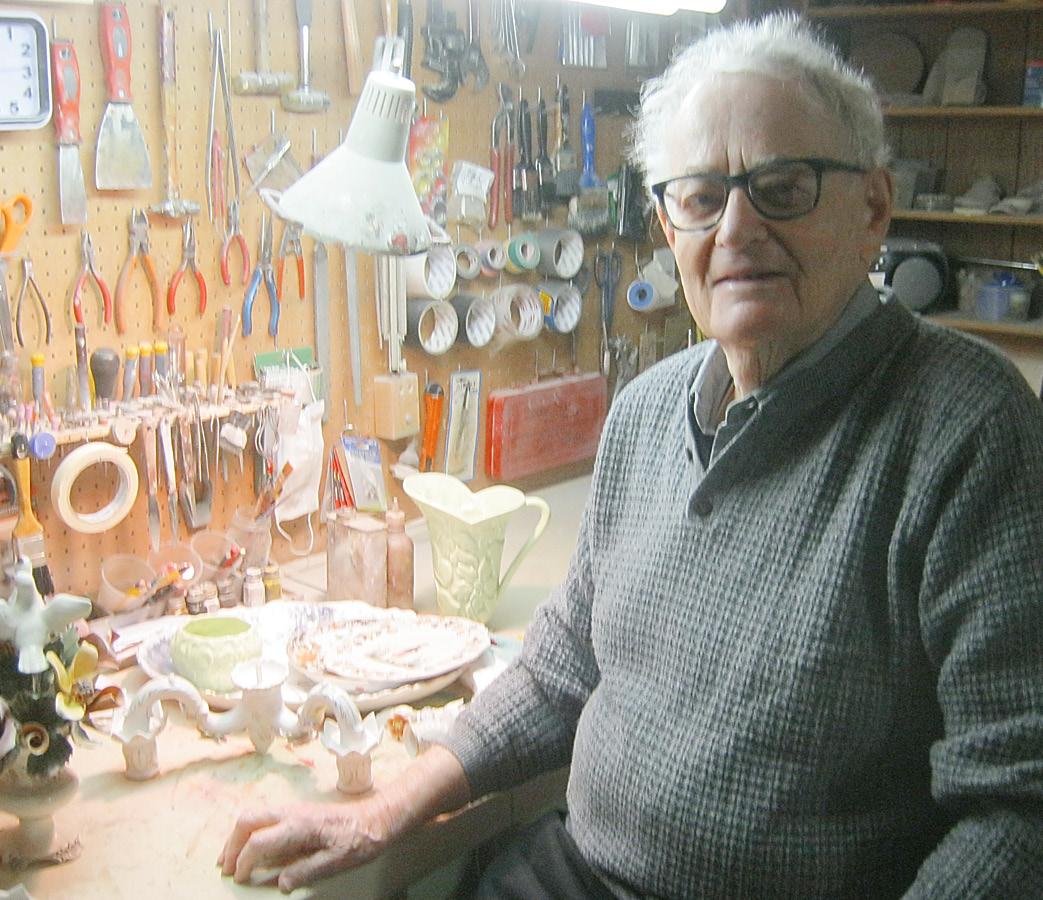
It began for Julius in the mid-1960s when his brother, Bernard, who was in the art restoration business in L.A., invited Julius to join him in business in the States. At the time, Julius was working in administration at the Victoria hospital and doing some restoration work as a
hobby. (He notes that his mother was a painter and sculptor.)
So, Julius quit his job with the intention to take up his brother’s offer. The catch was that the visas were a long time in coming and he had to earn a living in the meantime to support his family. He started visiting local antique stores and moving companies and was soon so busy that he decided to stay in Winnipeg.
Art restoration, he noted in one of our earlier interviews, is a craft for which there were no manuals. “I had to create my own techniques, materials and tools from scratch,” he said. “A lot of items I receive for repair are missing pieces that must be replaced so that you would never know the item had ever been damaged. The new part I make must blend in. The colour must match. There are hundreds of shades of white alone.”
He noted that the only instances where he turns down an assignment is when the item is so badly damaged that it is not worth repairing.
Julius over the years has done work for jewelers, churches and museums as well as moving and insurance companies. His largest assignment was the restoration of 92 fire-damaged items – covered by insurance – for a private collector. “The paintings had suffered smoke damage,” he recalls. “I replaced the damaged parts and was able to match the colours with the surrounding areas.”
The single most expensive objet d’art that he worked on was a New York col-
lector’s pre-Ming Dynasty porcelain vase which was valued at $40,000.
“A lot of people bring me objects that have sentimental value to them,” he notes. “It is gratifying to see their joy when they come to pick up the items. Some cry. Others hug me.”
He reports that he has worked for clients throughout North America and as far afield as France and Germany, Iceland and New Zealand.

Now he points out that business isn’t what it used to be. “The market has changed considerably over the years,” he comments. “Older people still value
china and figurines, for example. Most of the people who bring me pieces for repair are older.
“For younger people, though, if something is broken, they more often throw it out and buy a replacement. Younger people are not interested in spending money on antiques.”
These days, Julius still works part time. But, he says, he always has new items on his work bench downstairs at his home waiting to be worked on.
“The work keeps me young,” says the father of four (with his wife, Shirley) and grandfather of five.
Now that the days are starting to get longer there is going to be more daylight time to get some of the geocaches that may require a few more minutes to find or maybe just more time to put on the extra clothing that is needed to combat the cold. More than likely the latter.
In many cases this month, because it is so cold, is when some Premium members (those who pay the $29.95 annually) try to solve the Mystery (or puzzle) geocaches. For my wife and I it’s all about getting out in the fresh air. We love our walks and the prize that waits at the end of the trail. The puzzles are an ongoing item for us.
Another question has surfaced: “How do you find the events?” Events are open to everyone and are on the geocaching website along with the geocaches.
down menu. The first method lets you browse a calendar and the second opens a map with all the locations.
Opening our MBGA webpage at https://mb-geocaching.com/ will bring you to a set of tabs on the left hand side. One of those is upcoming events, click on it. You can also go to https://mb-geocaching.com/ upcoming-events. This is the same page.
It is possible to find these on your phone, but it is a bit more complicated. Even on the phone the MBGA webpage is the easiest. As I mentioned last month, the events are mostly free and anyone is welcome. Once you sign the logbook at the event you can then log it online and it counts as a find.
You can also read past articles for more detail at https://whatsupwinnipeg.ca/lifestyles-55.
This month usually is very cold and that is when you need to ensure that you research the cache you go for thoroughly. Is it winter friendly? Has it been found recently? Are there a lot of DNF’s (did not finds)? What are the difficulty level and the terrain level? Are there extra hints in the comments that could help you find it quicker? Is it quite far off the road or in a lot of bush and therefore not easy enough for you to get to?
Gary Brown GeocachingTo find them on a computer go to the webpage (geocaching.com), sign in if necessary and click on your geocaching name in the upper right hand corner. On the page that opens there should be a calendar on the right hand side which will show highlighted dates on it. These are usually days with events which can be opened by clicking on them. You can also, instead of clicking on your name, click on the Community tab and then on events on the drop
At the risk of sounding like a school teacher, let’s review what we have covered so far in past articles.
1. Create an account online and use the account or the Geocaching® app to view a map of geocaches near you.
2. Find a geocache using the app or a GPS receiver to navigate to a geocache nearby. Don't forget to bring a pen to sign the logbook!
3. Share your experience. Once you find the geocache, sign and date the logbook. Then log it online as well.
I don’t mean to scare you off as there are a lot of geocaches that are quite easy to get during a cold spell. Once you have a few under your belt you will feel a lot more comfortable tackling the more difficult ones. They exist in most areas of the province from Churchill, where you may need an armed guard to protect you from the polar bears, to the Copely Anglican Church in the very southwest corner of the province, to the “While the Kids Play” cache in Middlebro in the Southeast corner of the province.
Next month we’ll discuss some of the many ways to travel to and log some of the tens of thousands of geocaches in Manitoba along with how to turn geocaching into a vacation.
Gary Brown is the vice president of the Manitoba Geocaching Association (MBGA) and can be reached at MBGAexec@outlook.com.

When animals are slaughtered, the leftovers become pet food. Processors add diseased animals, animals that died at the farm, spoiled meat from supermarkets and used restaurant grease
in descending order of weight, manufacturers use several different sources of grain so that they can be scattered throughout the list of ingredients.
What do you feed your dog? your cat? If you are like most owners, you purchase your pet food at the supermarket when you buy your weekly groceries, at a discount retailer or you make a special trip to a pet specialty store. But do you really know what’s in your pet food? If you look at the packaging on many of these foods, you might think the food contains choice cuts of beef, plump chicken, fresh fruits and vegetables, wholesome grains. However, most of what comprises dog and cat food comes from the rendering plant and food unfit for human consumption.
When cattle, pigs, chickens, lambs, and other animals are slaughtered, the muscle, surrounding fat and perhaps parts like liver and tongue are taken for human consumption. The leftovers become pet food. Processors add diseased animals, animals that died at the farm, spoiled meat from supermarkets and used restaurant grease. Left over grains are included: corn, rice, wheat, barley, sorghum, oats, or rye after most of their nutrients have been removed.
Dogs or cats would not eat this highly processed stuff but since these animals use their sense of smell to judge a food’s suitability, manufacturers spray fats on the kibble to make them appetizing. The fat also acts to bind various flavour enhancers, both natural and artificial, that are used to trick the animal into eating something that it would otherwise ignore.
The pet food market is dominated by a few huge multi-national corporations that have acquired many successful pet food companies. Nestles owns Purina which makes Dog Chow, Cat Chow, Fancy Feast, Alpo, Friskies, Beneful, ProPlan, Purina Veterinary Diets and several other brands. Mars Inc.’s labels include Pedigree, Whiskas, Sheba, Temptations, Royal Canin, Waltham, Nutro and several more. Del Monte’s brands include Kibbles ’n Bits,
Meow Mix, Gravy Train, 9 Lives, Nature’s Recipe, Milk Bone, Pup-Peroni, Sausages, Pounce and others. Hill’s Science Diet is owned by Colgate-Palmolive and Proctor & Gamble bought the Iams Co. and marketed the brand to the masses. When you consider the large number of varieties (puppy, kitten, weight control, senior etc.) and the vast number of flavours that are produced under these labels it is easy to see why they dominate the pet food isles.
From a business viewpoint, pet food fits nicely with companies that make human products. These multi-nationals have tremendous purchasing and marketing power; they can use the waste products from their human food divisions; and they have the clout to get their products onto store shelves.
About the only way a consumer can discover what is in the product is by reading the label. But even here the customer may be misled. Many dried foods are grain based. Since ingredients are listed
For example, rice, brown rice, brewers rice, corn and corn gluten are listed as separate ingredients. However, the grains combined in most cases make up the largest part of the formula. To avoid the appearance of too many grains, a recent trend has been to include vegetables and some fruits. Again, exactly how much, and what quality is not given. Moreover, dogs and cats are carnivores so why the abundance of grains, vegetables, and fruits in the formulas at all? Marketing purposely blurs the line between what’s good for us and what’s good for our pets.
What about purchasing foods from smaller companies that just make pet food? Usually, these companies try to differentiate themselves from the big players by offering super premium or ultra premium foods. Unfortunately, there are no set standards for these labels, just as there is no standard for a product calling itself natural. Nevertheless, these foods often use better sources of protein and in some instances use human grade ingredients. Again, when reading the packaging one must separate hype from fact.
So where does this lead the beleaguered pet owner? Unfortunately, it is difficult to find an objective answer to what is the best food for our pets. There is no one you can ask at the supermarket. At the pet specialty store you may be shown products that are the most profitable for the retailer. Your veterinarian is not highly trained in animal nutrition and often sells food himself.
Pet food manufacturers argue that pets live longer than they used to. However, the number of diabetic cats, dogs with skin allergies and the incidence of obesity in both dogs and cats suggests that many of these foods are not serving our pets well.

Robert Urano was a longtime operator of a pet food store and much enjoys animals.
Cold air can have an impact on the nasal immunity mechanism, which plays a crucial role in protecting the body against respiratory infections. The nose is lined with tiny hair-like structures called cilia, which work to filter and warm the air we breathe. The nose also produces mucus, which helps to moisturize and protect the respiratory system.
When we breathe in cold air, it can cause the blood vessels in the nose to constrict, reducing blood flow and making the nose feel cold. This can
lead to a decrease in the production of mucus, making the respiratory system more susceptible to infection. Cold air can also irritate the cilia, causing them to become less effective at filtering out germs and pollutants.
There are several ways that people can help to protect their nasal immunity mechanism when it is cold outside. One of the most effective ways is by wearing a scarf or a face mask over the nose and mouth. This helps to warm and humidify the air before it reaches the respiratory system, reducing the risk of irritation and infection.
Another important measure is to stay hydrated by drinking plenty of water. Proper hydration can help to maintain the production of mucus, which is essential for maintaining the health of the respiratory system.
It is also important to avoid overexposure to cold air. When outside in cold weather, it is best to limit the amount of time spent outside and to dress appropriately, covering the head, face, and neck to help protect the nose and respiratory system.
Finally, it is crucial to maintain good hygiene practices, such as wash-
ing the hands frequently and covering the mouth and nose when sneezing or coughing, to reduce the risk of respiratory infections.
Overall, cold air can have an impact on the nasal immunity mechanism, making the respiratory system more susceptible to infection. By taking precautions such as wearing a scarf or mask, staying hydrated, limiting exposure to cold air, and maintaining good hygiene, people can help to protect their nasal immunity mechanism and reduce their risk of respiratory infections.
Social-scientists use an imaginary Pyramid to illustrate how society classifies people on a social-economic scale. People who are the least educated and have the least wealth live in the bottom layers of the Pyramid. Many of these bottom dwellers are illiterate and have poor language skills; many do not have a job, and many are homeless. The one percent of the population who live at the top of the Pyramid control over one-half of the world’s wealth. The fifty-five percent living at the bottom of the Pyramid, control only one percent of the world’s wealth. In Canada, everyone has access to education and opportunities, everyone is free to move up, or down, the Pyramid.
There is a fear if too many people move upwards, the Pyramid will become top-heavy and topple over. Some believe to keep bottom-dwellers in their place, they should be kept uneducated, ignorant, and dependent on others for their needs. Despite this, many bottomdwellers have managed to climb high up the Pyramid. To begin the upward journey, as Mark Twain advises, one must abandon the fantasies and fairy tales that have been taught in and out of school and learn how the real-world works. A person who refuses to read is no better off than one who cannot read. Climbing skills may be learned by reading Benjamin Franklin’s, The Way to Wealth, along with his autobiography. Other recommended authors are Gerald Massey, Robert G. Ingersoll, Mark
Twain, Charles Darwin, Thomas Paine, Joseph Atwill, Robertson Davies, and especially Dr. Orison Swett Marden, whose life was a true ragsto-riches saga. You will learn, there is no need to rob others. You can increase your wealth and status just by improving yourself. For a family to remain at the top, it usually takes three generations to climb the Pyramid, with each generation becoming more educated and talented than the previous one. A parent’s ceiling should be their children’s floor.
A quick climb often results in a quick descent. One must move up a little bit, grow accustomed to the new environment, and then move up a little more.
Peter Nygård is an example of someone who wanted to run up the Pyramid. He lost his footing and found the Pyramid to be a slippery slope as he slid to the bottom. Was this a case of “pride comes before a fall”, or possibly, an example of how someone may be corrupted by money and power?
In George Bernard Shaw’s play, Pygmalion, Eliza Doolittle, a street urchin, is accepted into aristocratic society as one of their own after she is educated and groomed by Professor Higgins. This play is a satire, pointing out that the idea of blue bloods is all fiction and fantasy. We are all the same, ALL-ONE, and it is our environment that shapes us. Pygmalion was made into a popular musical, My Fair Lady.
Sir Sydney Poitier is a real-life example of how a person may, with a little
effort, change their speech and mannerisms to fit into a different stratum of society. Growing up in The Bahamas, Poitier spoke a Bahamian patois, and had Bahamian mannerisms. After arriving in Florida at age fifteen, Poitier learned how to imitate upper middle class American speech and behaviours. Many people who knew Poitier, believed, because of his language skills and personality, he must have been university educated, when, in fact, he had almost no formal education, having attended a one-room schoolhouse on Cat Island, in The Bahamas.
Libraries have thousands of biographies of people who have moved upwards like Poitier. Living in a society which allows freedom of choice, we all can follow Poitier to a higher level on the Pyramid. On which level do you want to live?
Many people have received a first-class university education for very little money, often for free. There are many books which explain how this may be done. Some people have obtained scholarships while others have worked at menial jobs
to pay their tuition. Many have found jobs at a university which gives free tuition to employees. Thousands have learned how they may, with a small fee, challenge final exams without ever having attended any classes. Textbooks may be borrowed or purchased second-hand at a reasonable cost. Studying on one’s own teaches much-needed skills in selfdiscipline. Where there is a will, there is a way. Many at the top of the Pyramid have little formal education, but, like Andrew Carnegie and Henry Ford, they never stopped reading and learning from books, many of which are available for free in local libraries.
There is no excuse for not moving up the Pyramid. All it takes is a little bit of education, planning, and determination.

Next month: Common Sense
Wayne Douglas Weedon is a Manitoba author. Some of his works may be downloaded, free of charge in various formats, at https://archive.org. Any of this authors articles published in Lifestyles 55+ magazine, may be freely copied and circulated in any format, if the source and author are acknowledged.


The preparation of a will may seem like a daunting task, however, it is essential to ensure that your property is disposed of according to your wishes upon your death. If you pass away without a valid will, the law states what is to happen to your estate.

A power of attorney is a document which appoints an individual to handle your affairs in the event you become mentally incapable of making your own decisions. Nothing prevents you from continuing to make your own decisions while you are still competent. A power of attorney is an extremely valuable document to have in place in case anything happens to you which affects your mental ability, such as a stroke, coma or dementia.

A health care directive, commonly called a living will, is a document which appoints an individual to make decisions with regard to your health care only, while you are alive but unable to express your decisions yourself. This document is distinct from a power of attorney and deals only with health care decisions such as whether life sustaining treatments, such as CPR or blood transfusion, should be continued or withdrawn. Standard Fees* Seniors

TACIUM VINCENT & ASSOCIATES 206 St. Mary’s Road, Winnipeg, MB R2H 1J3 DAVID G. VINCENT (204) 989-4236 www.taciumvincent.com


originally had a list of topics to choose from to kick off the New Year.
I struggled with all of them as, after looking at them over and over again, I realized they all had a negative bent to them. Climate change, ongoing warring nations, corrupt politicians, variations of various viruses and the hits just keep on happening. So, although they were all valid to various degrees, I thought it better to start 2023 off with something more positive. Here is a list of 100 Canadian inventions we can all to be proud of. Just more reason why we should all feel fortunate to live in this great country.
Jim Ingebrigtsen Is It Just Me...
And as a small bonus, I know we’re in the cold months of the winter but below are ten gardening tips for beginners. After all … Spring is just around the corner … almost.
Peas don’t like too much water.
Potatoes do not like tomatoes.
Potatoes do not like cucumbers.
Potatoes and cabbage are friends.
Do not plant beans with onions or beets.
Beans love carrots.
Beets love onion, cabbage and potatoes.
Tomatoes love carrots and peas.
Cabbage does not like radishes.
Beans and cucumbers do not like each other.
• • •
Stay warm, stay positive. Happy New Year!
Jim was a writer-broadcaster, producer and presenter on television and radio for 40 years. He is also a host on Lifestyles 55 Digital Radio. Find Radio Redux and MidCentury Memories it at www.whatsupwinnipeg.ca
As more and more of our family holiday plans come crashing down because of COVID-19 infections in various members of the family, I am quite rudely reminded that this pandemic is not finished with us yet. It sometimes seems that even while we desperately seek to return to some version of normal life, we come face to face with the reality that there are many parts of life that we simply cannot control. The pandemic will not bend to our will, and there are so many other parts of life that are the same.
Professional advice givers have often been heard to say that “You cannot control many things that happen in your life, but you can control the way you respond to the situation”. And, it seems that Norman
Afall is serious no matter what your age, but once you are past 65, the dangers increase. One out of three persons over the age of 65 falls.
After a serious fall, older people can suffer post-traumatic stress disorder stemming from concern about falling again and this can result in anxiety and depression –even delirium and dementia. While only 10 percent will have serious physical injuries from a ground level fall, a broken bone can lead to hospital stays where you are in danger of picking up some secondary, hospital-related condition – anything from sepsis to C. difficile to urinary tract infections, all common in a hospital setting.
Falls can also result in unseen internal injury that can damage internal organs, internal bleeding and even a splenic rupture. If you fall, be sure the doctor gives you a thorough examination and watch for secondary symptoms after you go home.
Just don’t fall.
While it may seem counter-intuitive, staying active is the best advice. Going to
Vincent Peale had some good perspectives for life in his 1952 best seller The Power of Positive Thinking. Part of his approach is this recommendation for life: “The way to happiness: Keep your heart free from hate, your mind from worry. Live simply, expect little, give much. Fill your life with love. Scatter sunshine. Forget self, think of others. Do as you would be done by. Try this for a week and you will be surprised.”
You may think that this was easier to do in 1952, but somehow there have always been many challenges and difficulties in the world. It is always possible to find reasons to worry and expect that the world is doomed. And yet, it has been demonstrated so many times that a positive and thankful approach to life is a
powerful force for good and for accomplishment. I can remember a professor in a business course talking about the wellstudied impact of a positive attitude on the career trajectories of employees. Interestingly the studies showed that the people with a negative and discouraged attitude about work and life were more correct in their assessment of a given situation. However, promotions and career advancement came much more frequently to the people who demonstrated a positive attitude in the workplace.
In recent weeks I have read several newspaper articles, on-line advice columns, and most recently a Harvard Business Review article reminding people to cultivate an attitude of gratitude. Some of the advisors suggest keeping a gratitude journal in which you start each day by listing three things for which you are grateful. This habit becomes a daily reminder of the many things in life that are such remarkable blessings. Today’s posting from Harvard Business Review reminds people
to “Be Grateful More Often.” The article sites the following benefits from cultivating a grateful spirit:
1. You savour positive experiences.
2. You are more resilient in the face of stress.
3. Your physical and mental health can improve.
4. You increase the self-worth of others. Apparently expressing your gratitude to those around you for their efforts is also a highly effective way to increase productivity, improve morale, and create a positive work culture. These all seem to be good reasons to work on being positive and expressing gratitude. As you have likely surmised, I will be starting a gratitude journal in 2023, and I am looking forward to reminding myself daily of the many things in my life that are such wonderful parts of my life.
Happy 2023!
Trudy Schroeder provides project planning and management services to the community through Arts and Heritage Solutions.
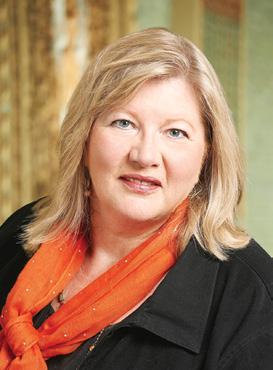
a gym where you can work out with other people provides an opportunity to socialize at the same time as you are getting the exercise you need to keep your body healthy and your osteoarthritis from becoming too painful. Exercise strengthens your muscles and bones and helps to keep your joints flexible. The first time out, it may hurt for a little while, but as you move, the pain is reduced. Gentle stretching at the beginning and end of exercise will also help. Building strength helps to maintain balance. Balancing exercises help even more.
Remember, just do a little at a time. Start with one lap around the gym if walking is difficult and build that up over time. Do five minutes of rowing and add a minute each week. If you are lifting weights, start with 5 lbs. and one round, then and add more every few weeks until you have reached your target and do at least three cycles of whatever routine you have chosen.
You will be surprised how quickly your muscles respond.
Every house has them: places where it is easy to trip and fall; loose scatter rugs, uneven surfaces transitioning from one room to another, furniture you have to maneuver around; slippery surfaces, slippery bathtubs. Take a tour and decide to deal with these hazards today. Don’t forget to include your front and back entrances or the stairs to your garage. These trip taps can occur anywhere. You probably already know where most of them are because chances are you have saved yourself more than once at these spots
Do take a look at your favourite pair of slippers. Are they easy to put on and easy to slip off? If so, they are probably easy to slip on – meaning, you can slip on them! Replace them with some snugger fitting wear – with backs. Yes, you may have to bend over to get them on, but that’s just more good exercise and stretching you should be doing anyway.
Outdoor shoes should have non-slip
soles. That doesn’t mean you need to abandon the high heels for a special night out, but everyday use requires some common sense footwear. Running shoes are comfortable and trustworthy.
Sometimes we trip because we can’t see where we are going. Make sure you have the right glasses and if the fancy trifocals don’t work for you, get something that will.
Be sure stairs are well lit and use the lights. We all too often think we know where everything is so why turn on the lights? But where one misstep can spell disaster, why take the chance?
We hate to admit it, but as we age, some things don’t work as well as they used to. So make sure you are protecting yourself as best you can. Chances are you should be taking a vitamin D supplement in the winter – ask your doc – and if you are having balance problems ask him to check your B vitamins. Too little or too much can both cause balance issues.
can be serious – some sensible and easy to follow






Newly constructed, and designed with the latest findings in aging research, Bergen Gardens offers a variety of customizable service packages to suit your lifestyle, including: Serenity Salon & Spa, Empire Cinema, Hometown Spirits Tavern and Men’s Shed Group, and much more. Gardening options

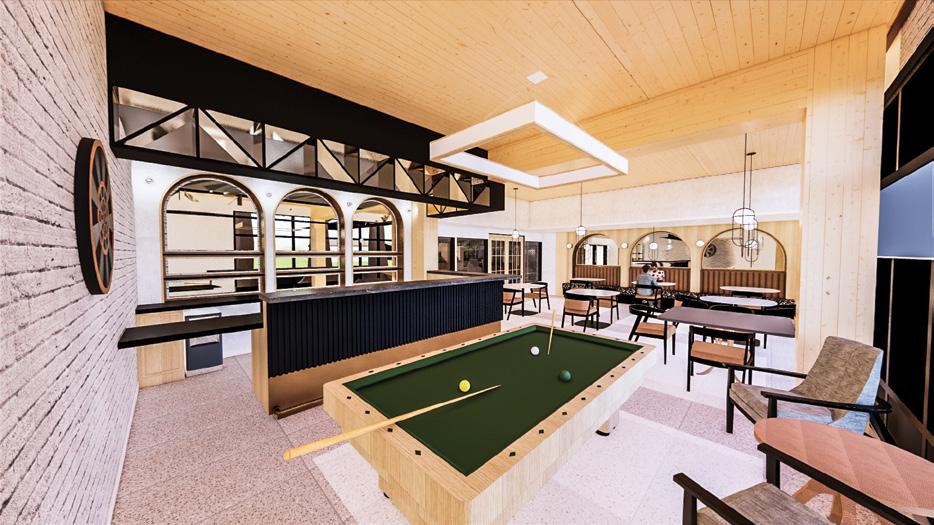









Using a Person-Directed Care philosophy we’re building a community that
204-979-8289 info@BergenGardens.ca 1475 Molson Street, Winnipeg
Bergen Gardens, setting a new standard in senior living, offers the perfect transition into a convenient and well-tailored lifestyle.